We spent 4 days in Cape Town and it was enough time to fall absolutely in love with the city. Having grown up during the era of Apartheid, I didn’t know much about South Africa other than the fact that the media frequently covered topics of violence, poverty, and segregation in the country. While things have improved since the Apartheid ended in the early 1990s, we couldn’t help but notice that Cape Town still remains a largely segregated city, and we witnessed several shanty towns while driving around (over 1/3 of Cape Town’s residents live in these slums/informal settlements).
Even so, this coastal city in South Africa (affectionately called ‘The Mother City’ by locals) truly has it all, and is worth visiting – a booming restaurant scene, beautiful and diverse scenery from sandy white beaches, rocky coastal cliffs, to rolling vineyards…and a rich but complex and important social, political, and cultural history. And of course, I won’t ever forget the first time I saw the looming giant that is Table Mountain; the sheer size and dramatic shape of this flat-topped mountain can only be appreciated in person, and I’m so glad that I was able to do so. Our trip to this iconic city was one for the books…so keep reading to learn how we spent 4 days in Cape Town!
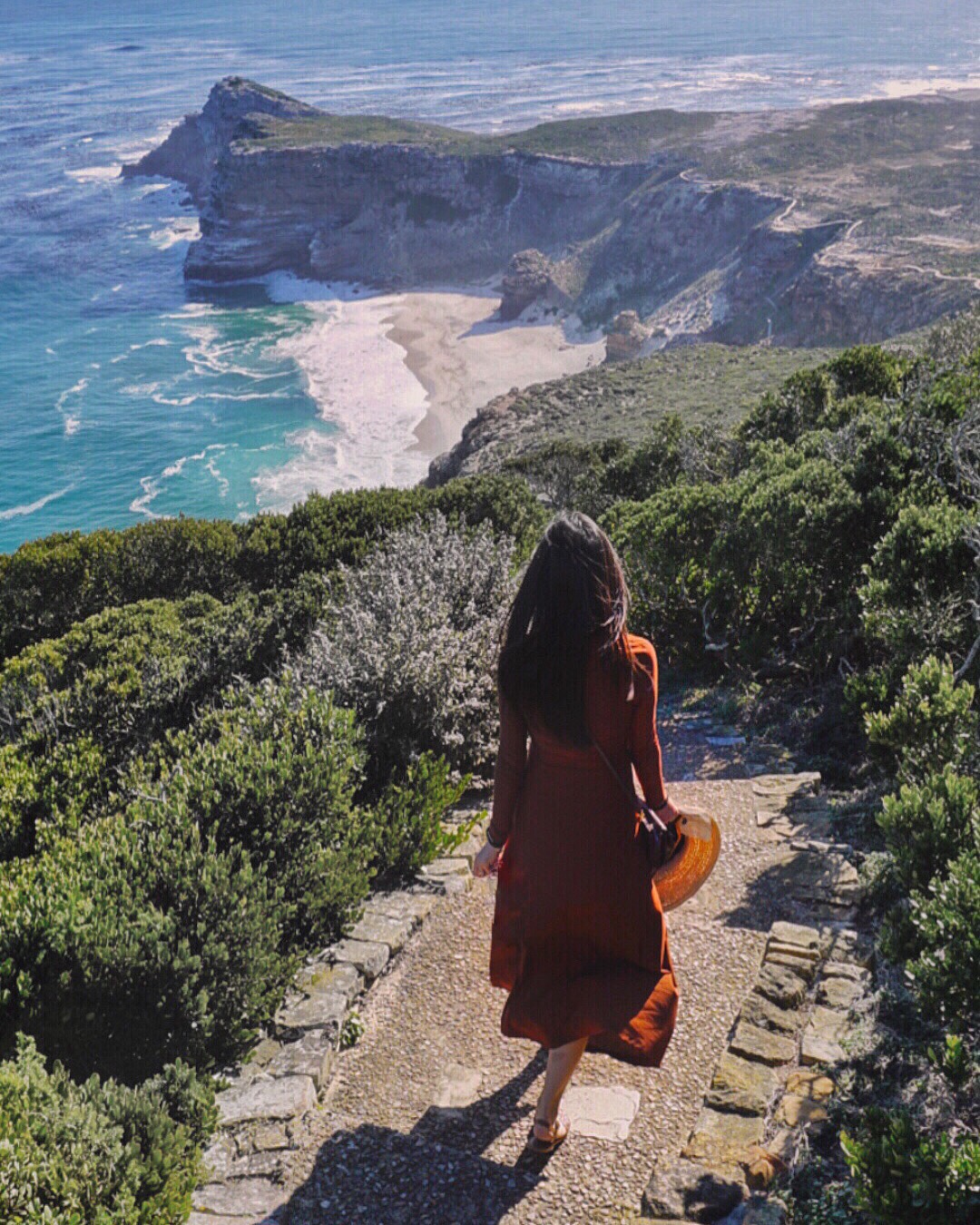
Related Post: Tips for Visiting Victoria Falls
Related Post: The Perfect Wine Weekend in Stellenbosch
Related Post: Planning a Safari in Kruger National Park
TIP: For a great AirBnB option, check out the place we stayed at here. We loved the location of this place – super easy to get to the nightlight on Bree Street as well as the V&A waterfront. There’s also an extremely friendly security guard who always made sure to watch over us while we were there (there are parts of Cape Town that can get sketchy at night).
Day 1: Boulders Beach and Cape of Good Hope
Boulders Beach
On our first morning in Cape Town, we made the 40-minute drive down to Boulders Beach and Simon’s Town. Simon’s Town is a fun little beach town featuring a variety of cute restaurants, shops, and museums, and is well-known for it’s maritime history, rocky beach, and colorful beach huts. We spent an hour wandering the town and beach, enjoying the sea breeze and a short lunch at The Monocle and the Mermaid.



From there, we headed to Simon’s Town’s most famous tourist attraction…Boulders Beach, where a colony of African penguins live. Yes, you read that correctly! Penguins on a beach?! Who knew?! The minute Kevin and I researched and discovered that we could swim and chill beachside with African Penguins, we knew we had to go. It’s estimated that there are between 2,000 and 3,000 of these waddling birds at Boulders Beach.

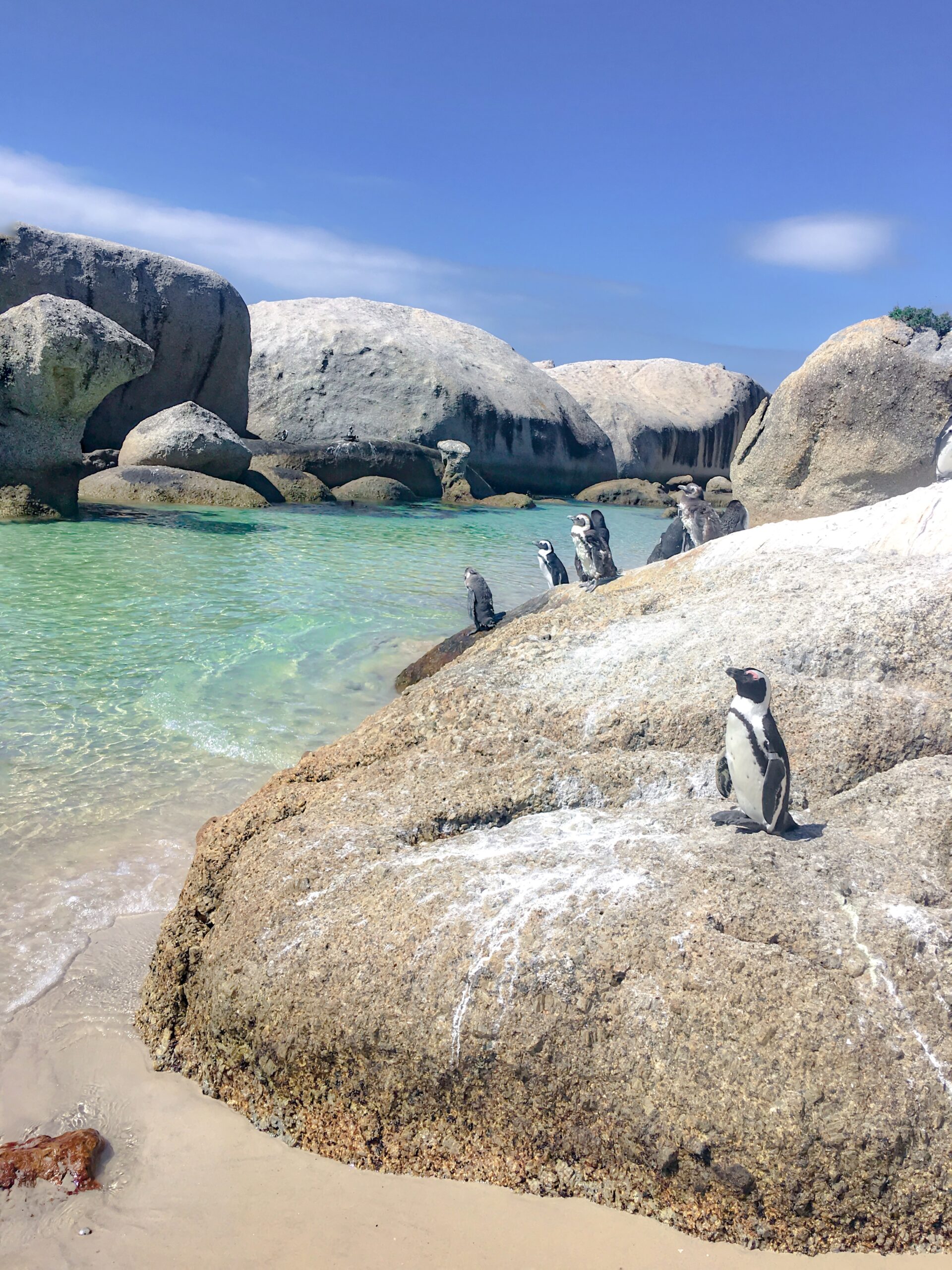

Need to Know: There is an R65 conservation fee to enter Boulders Beach. The African Penguin is considered to be an endangered species therefore Boulders Beach is now part of the Table Mountain National Park Marine Protected Area.
We spent several hours hanging out at the beach – climbing over rock boulders, getting our feet wet, chasing the funny furries around….and even took a few selfies.


Don’t be fooled by the cuteness – those little guys smelled pretty bad, and we had to navigate through quite a bit of poop while scrambling over the rocks.



Cape of Good Hope
After our afternoon of beach fun, we made our way to the Cape Point Nature Reserve to visit the tip of the Cape Peninsula. On our way there, we made a pit stop at the Bordjiesrif and Buffels Bay tidal pools, and were mesmerized by the massive waves that came crashing in. Apparently, the area is a great place for whale watching during the summer and fall months!
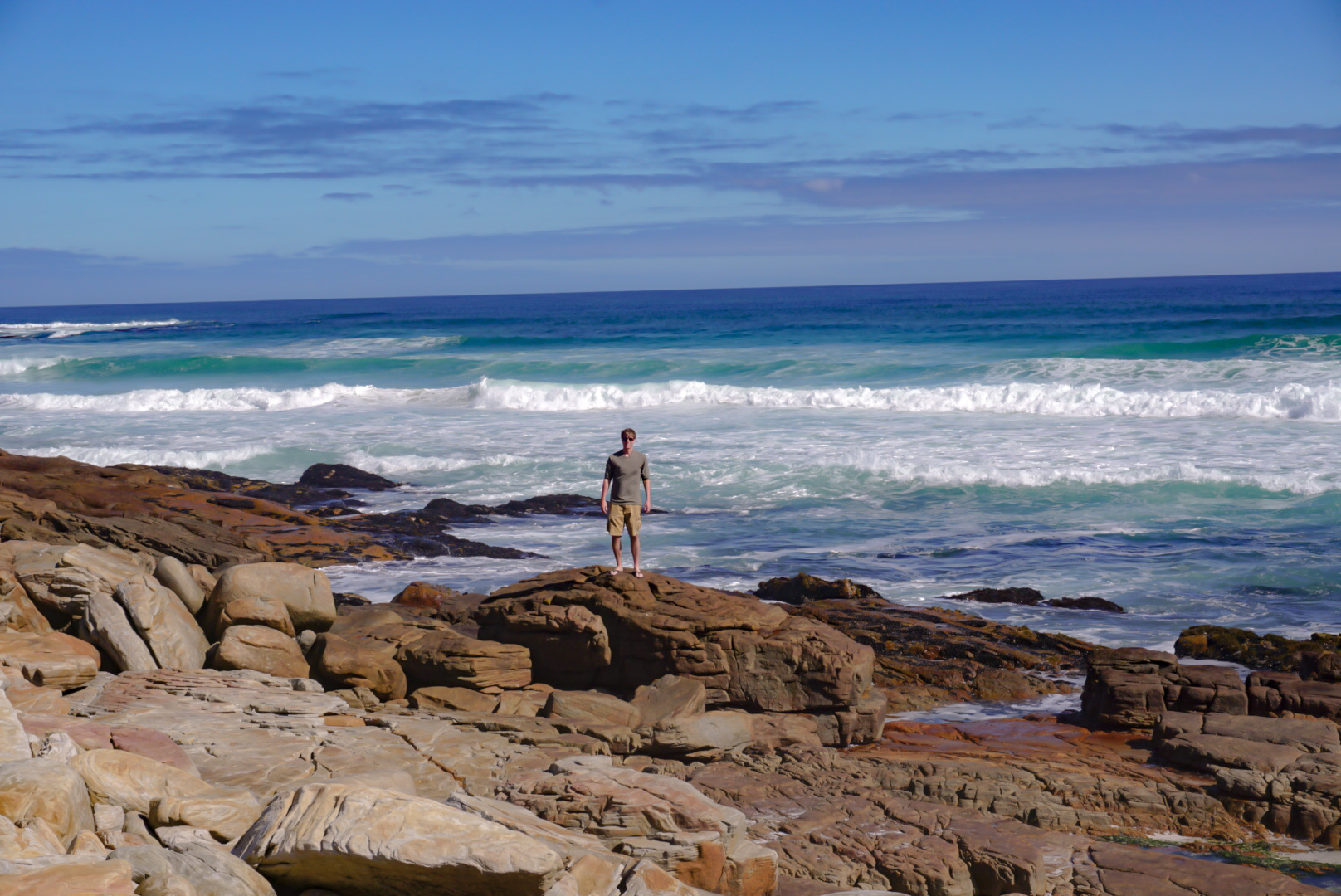
The Cape of Good Hope sign is located at the most Southwestern point of the African continent. While there, we also made the short climb to the Cape Point Lighthouse for a spectacular vantage point of the Cape. Note: If you aren’t interested in making the strenuous climb, you can also take the Flying Dutchman Funicular to the top for a small fee.
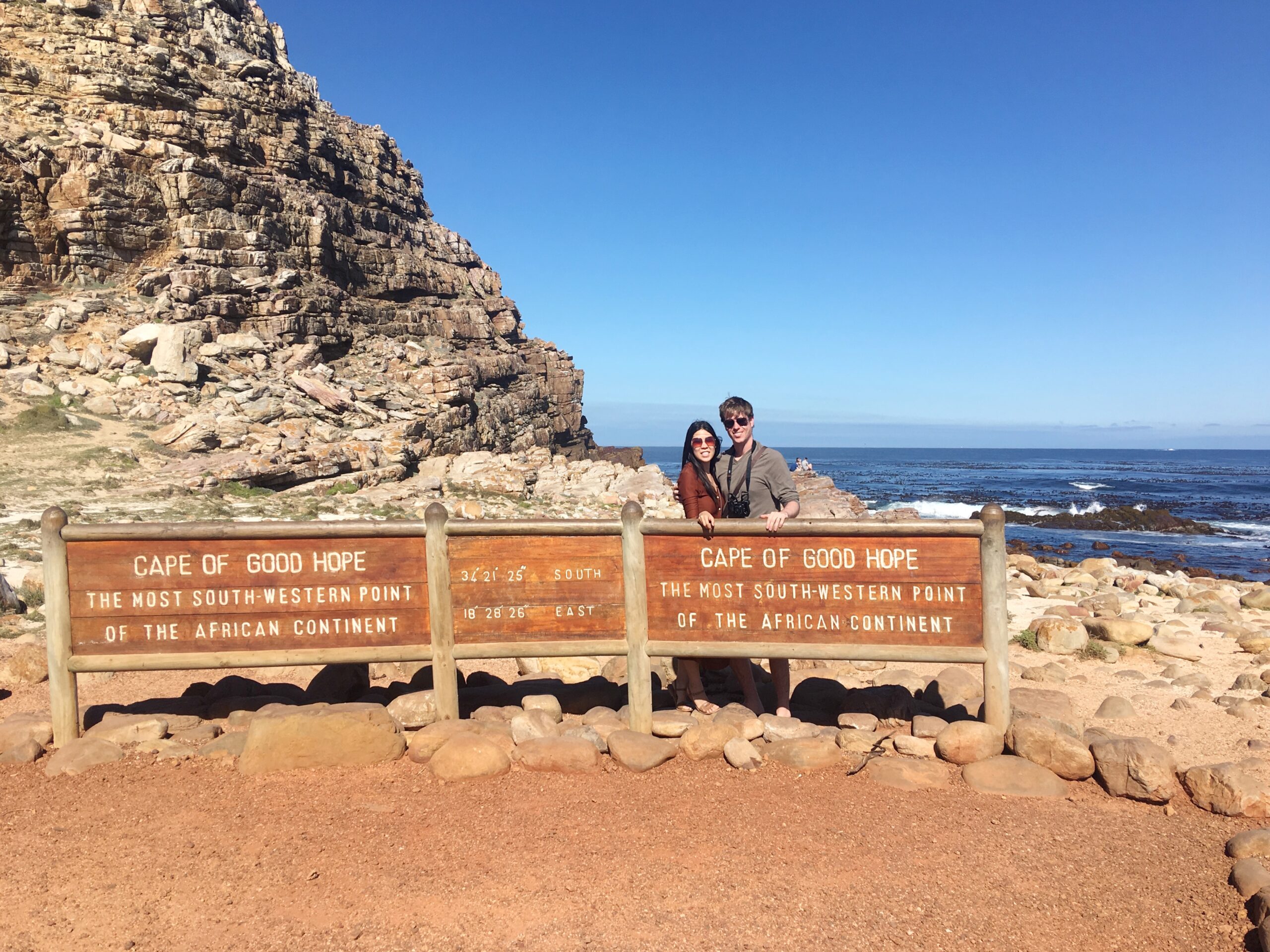
TIP: The Cape of Good Hope gate opens at sunrise and closes at sunset. Vehicles leaving at closing time are fined, so make sure you follow this schedule!
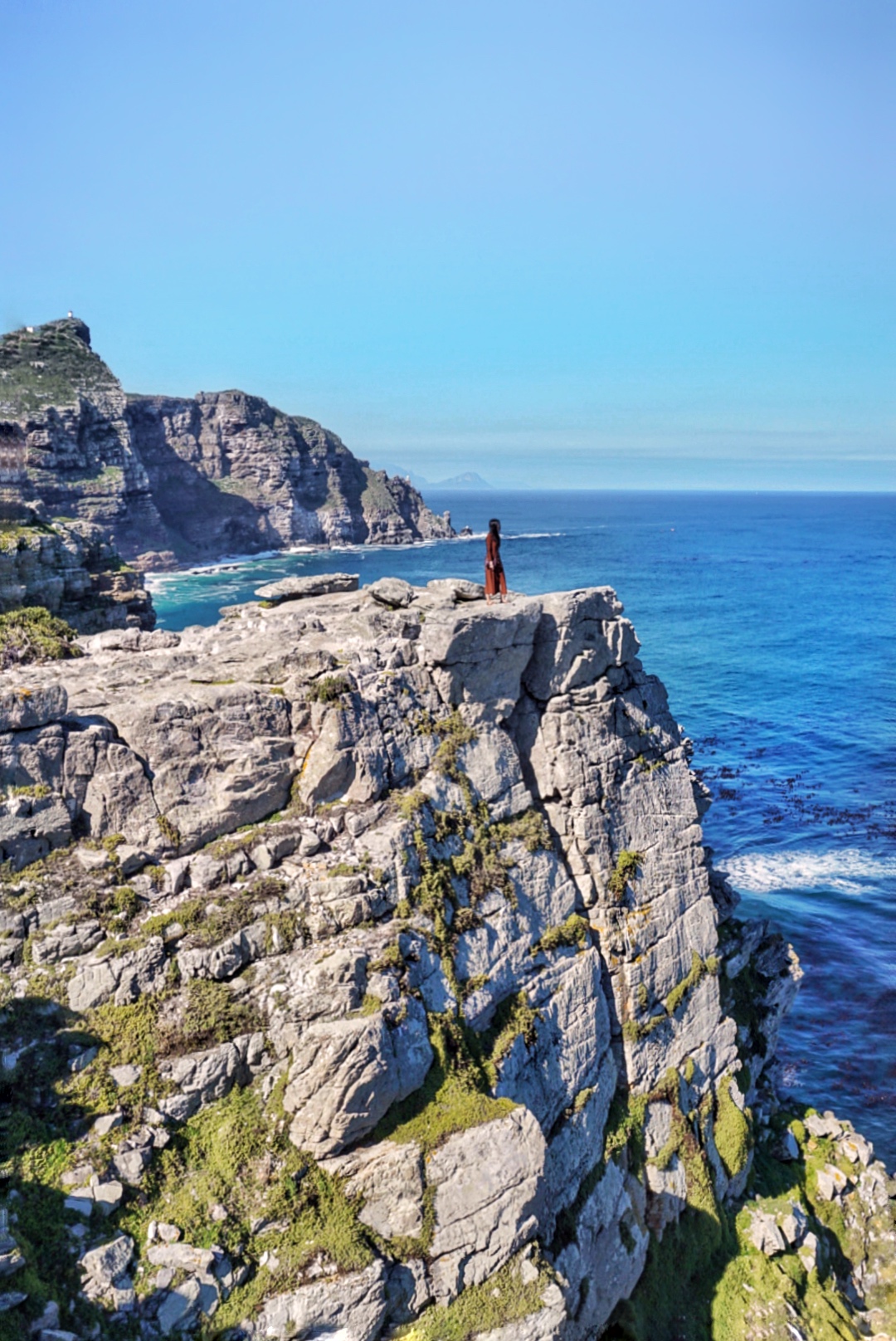
The Butcher Man
After making the drive home to Cape Town (1.5 hours from Cape Point Nature Reserve), we ended our night with a wonderful dinner at The Butcher Man. We REALLLLLLY loved this specialty butchery and grill, and ended up eating there twice during our 4 day trip (we rarely do this because we love trying out new restaurants, so you KNOW The Butcher Man has to be good). Located in Green Point, Cape Town, The Butcher Man is definitely the place to go if you’re looking for some good African braii (a.k.a. barbecued meat).

Day 2: Lion’s Head and Woodstock
Lion’s Head
Day 2 in Cape Town started out with an early morning wake-up call to hike up Lion’s Head for sunrise. Lion’s Head is a mountain situated between Table Mountain and Signal Hill. The Lion’s Head hike may be one of my favorite hikes of all time – it’s a relatively moderate 2.7 mile roundtrip two-hour hike, but offers some of the most amazing views of the city, the surrounding ocean, the Twelve Apostles mountain range, as well as Table Mountain.
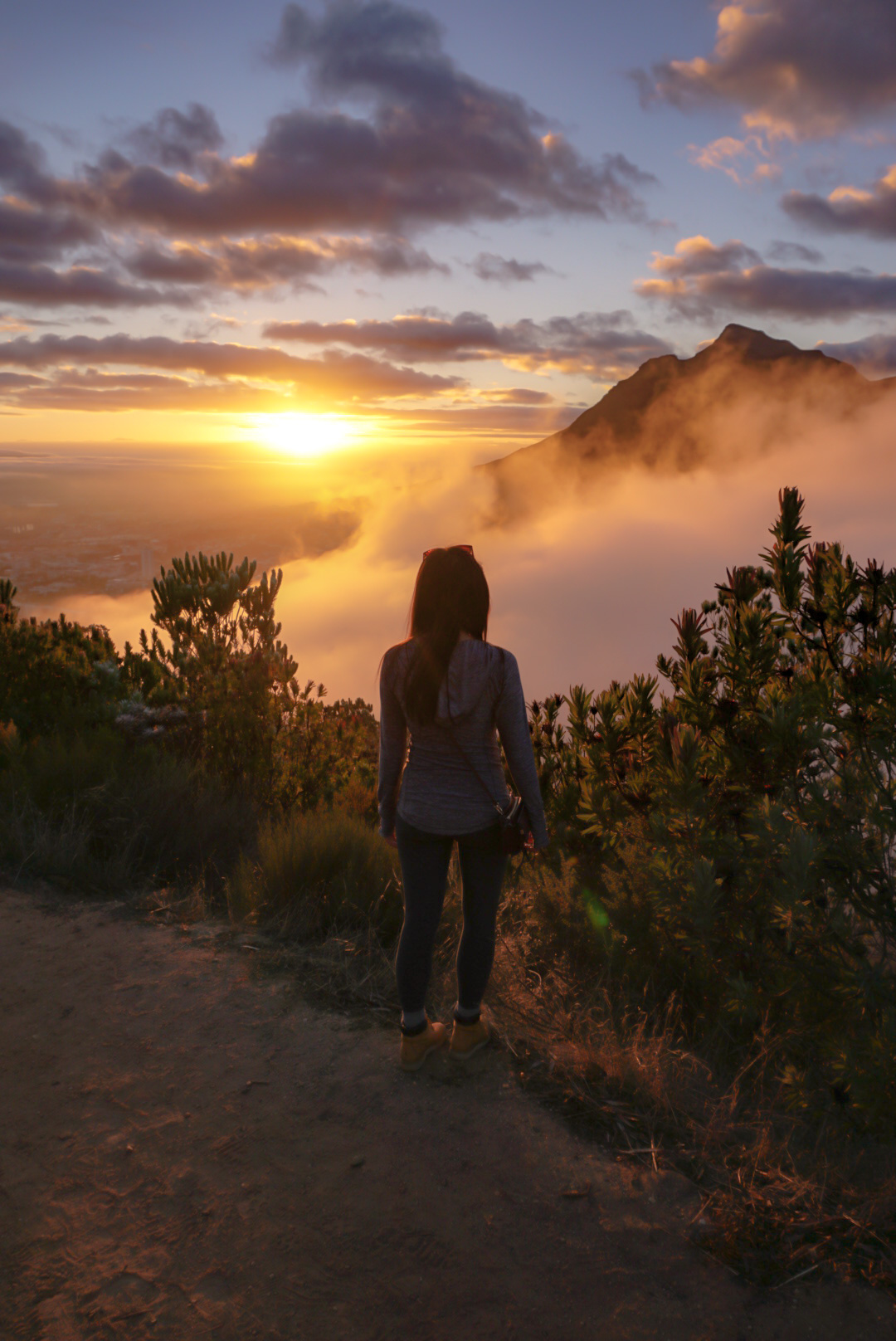
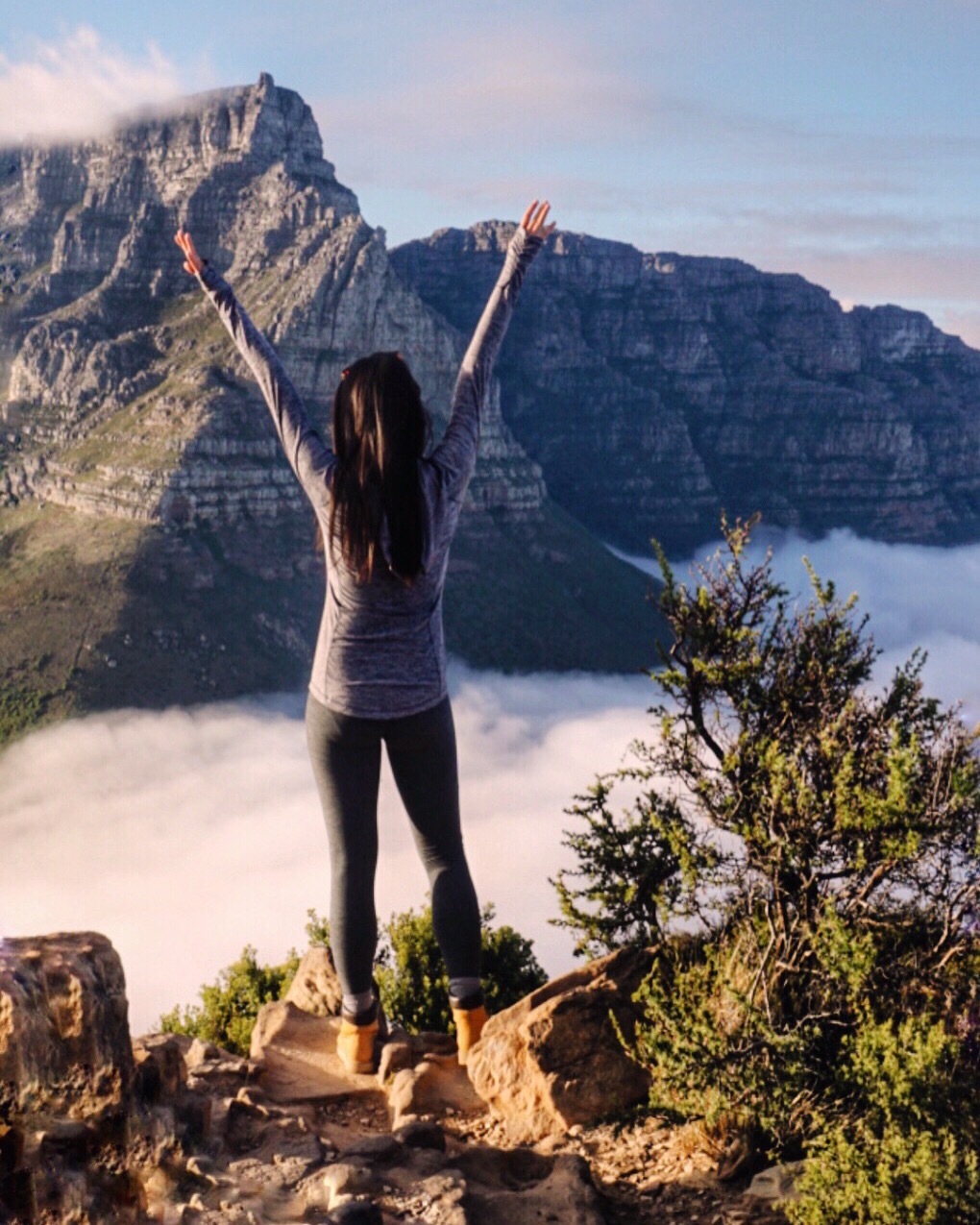

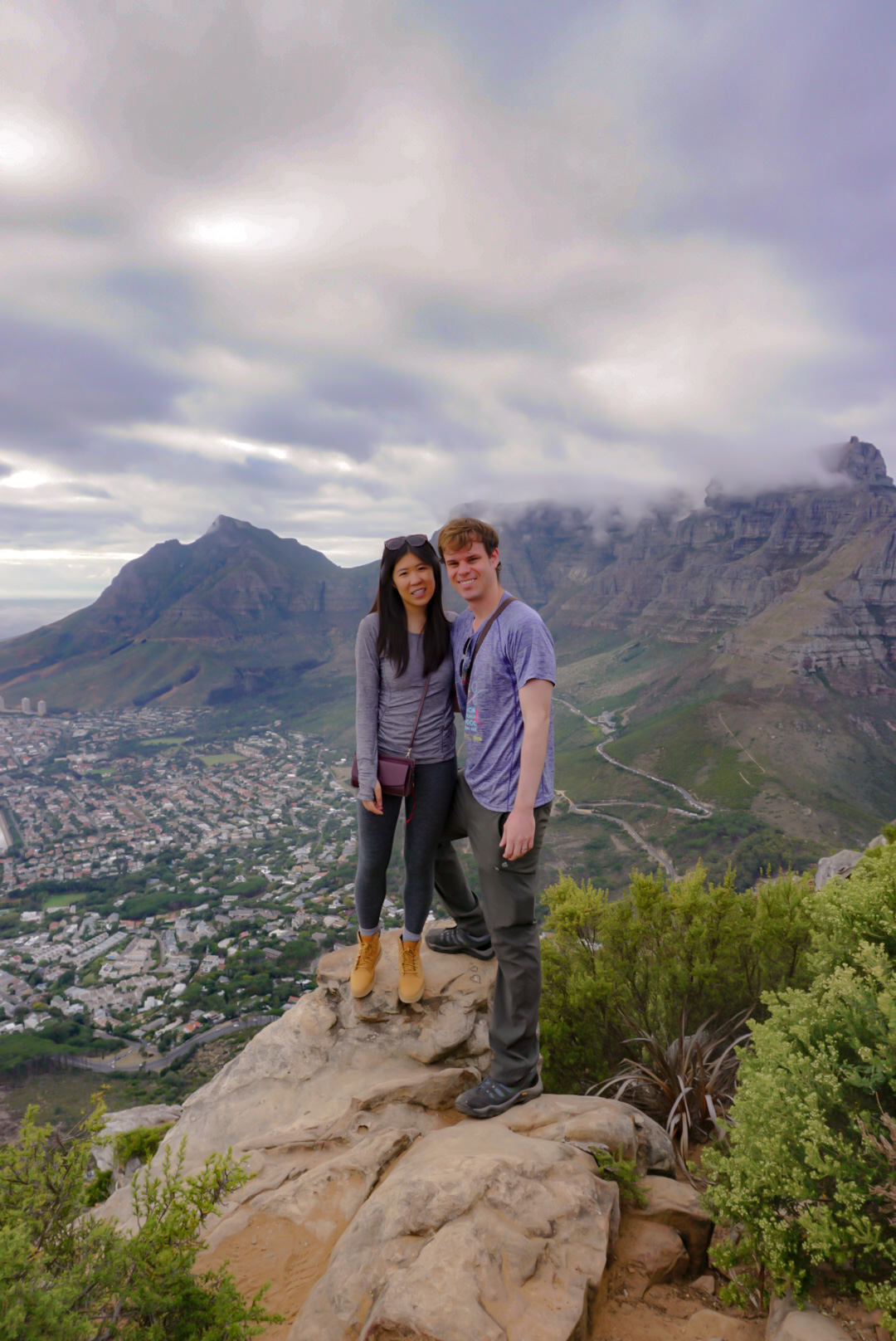
TIP: There is a dedicated Lion’s Head parking lot which you can reach via the Lion’s Head/Signal Hill turn from Kloof Nek Road. The lot fills up fast so either go early (before 6:30am if you can), or you may need to park on the side of the road.
We took a seat at the top of Lion’s Head and enjoyed the sunrise. The weather put on a good show for us while we were there – we were lucky to witness a stunning blazing orange sunrise before the mountains were engulfed in a thick white fog. Thirty minutes later, the fog dissipated and we were able to see a great view of the infamous Table Mountain ‘tablecloth’ (i.e., the layer of thin cloud that appears to fold over the mountain like a waterfall; local legend is that the smoke is a result of a smoking competition between the Devil and the pirate Van Hunks).
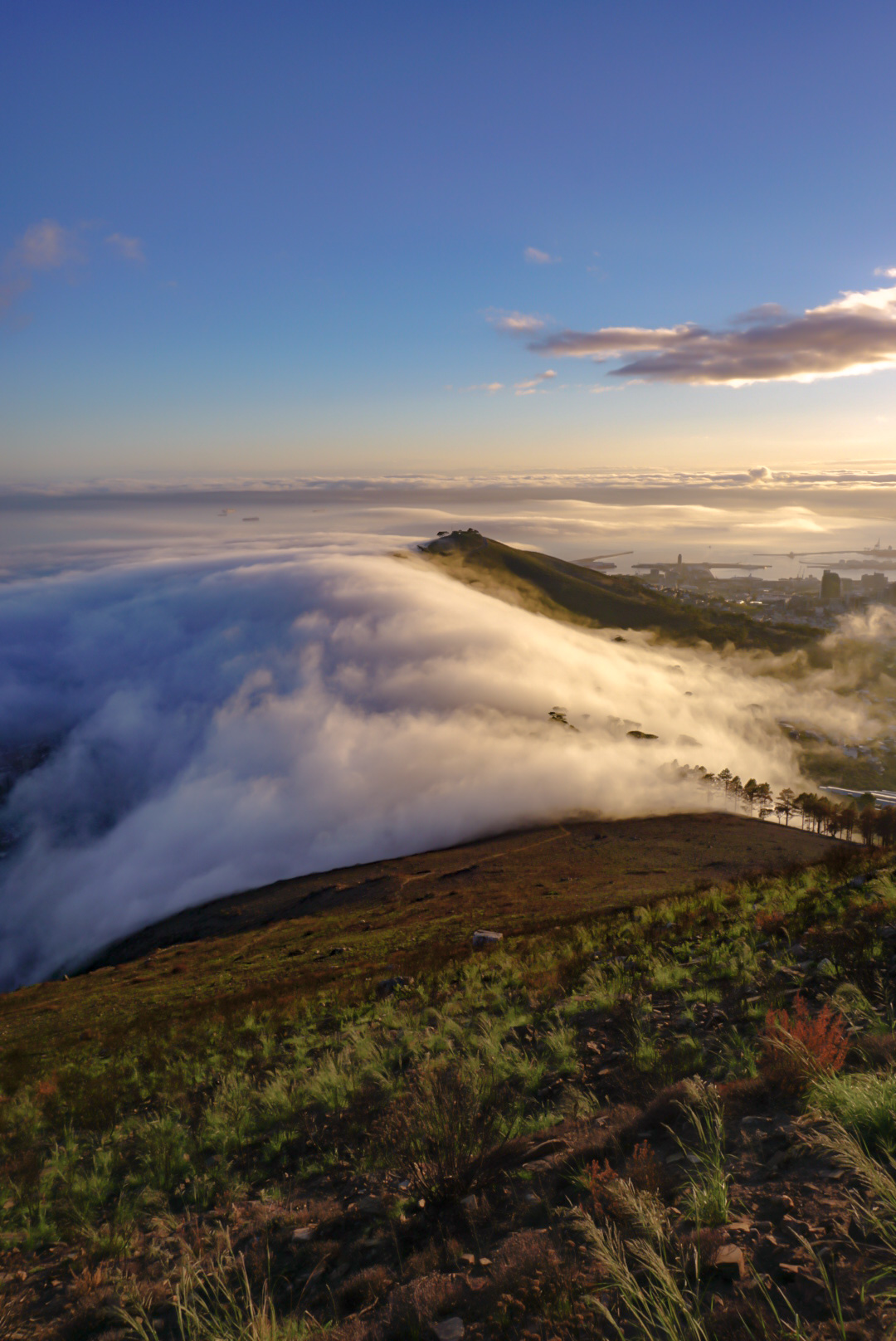
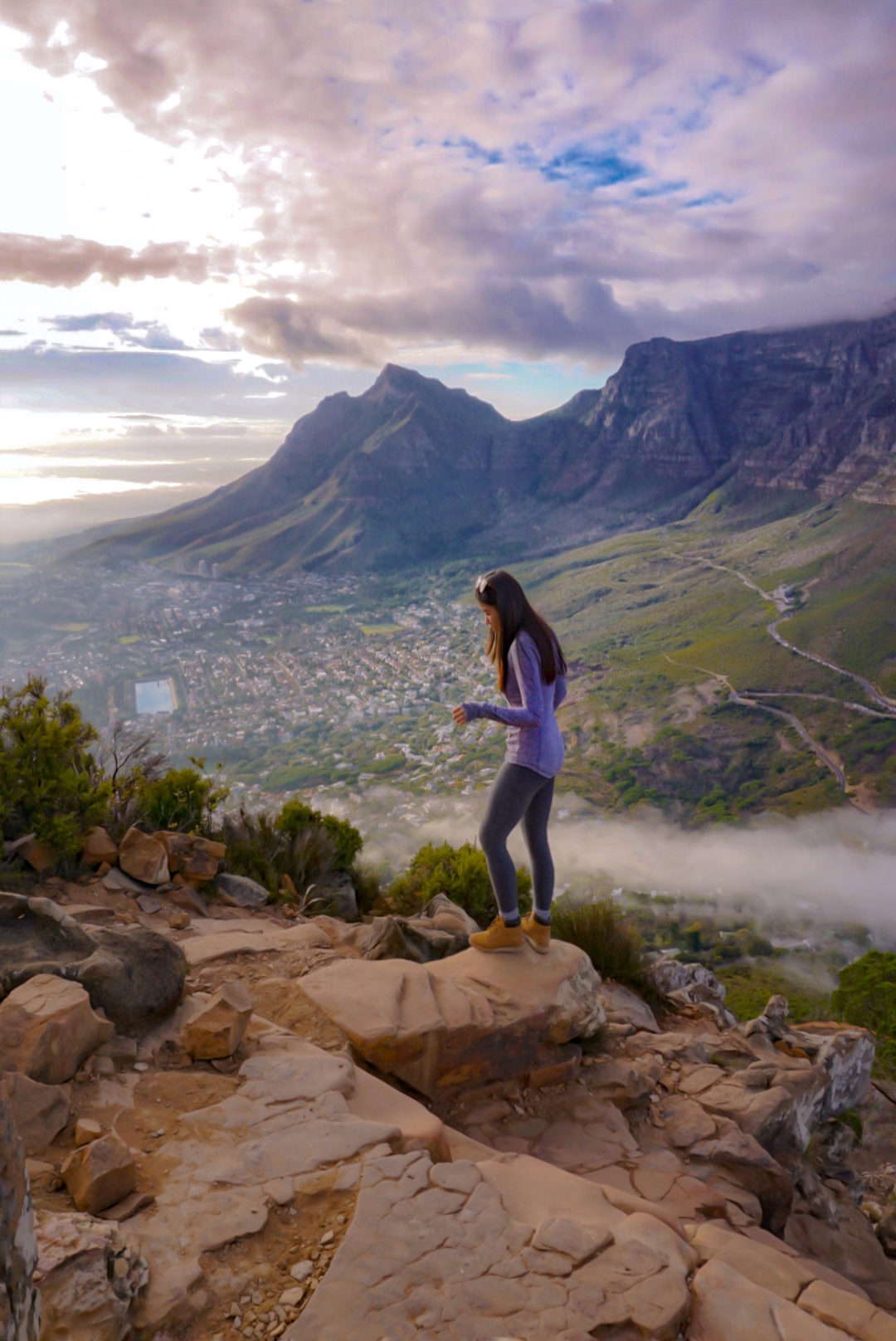


Woodstock
After our hike (and a hot shower), we took an Uber to the Old Biscuit Mill in Woodstock to peruse the lively Neighborhoods Market. The Neighborhoods Market runs on Saturdays from 9am to 2pm and is an absolute gem! Housed in an old brick warehouse and courtyard, this indie market has over 100 food stands, shops, artisan craft stalls, etc., and we spent several hours having a late lunch and exploring the area. There were so many good-looking artisanal food options that it was almost impossible to decide what to eat – we ended up ordering small plates from several different stalls so that we could get a good, diverse sampling of bites! Kevin also ordered a rooibos iced tea which was the perfect thirst-quencher for a sunny day.
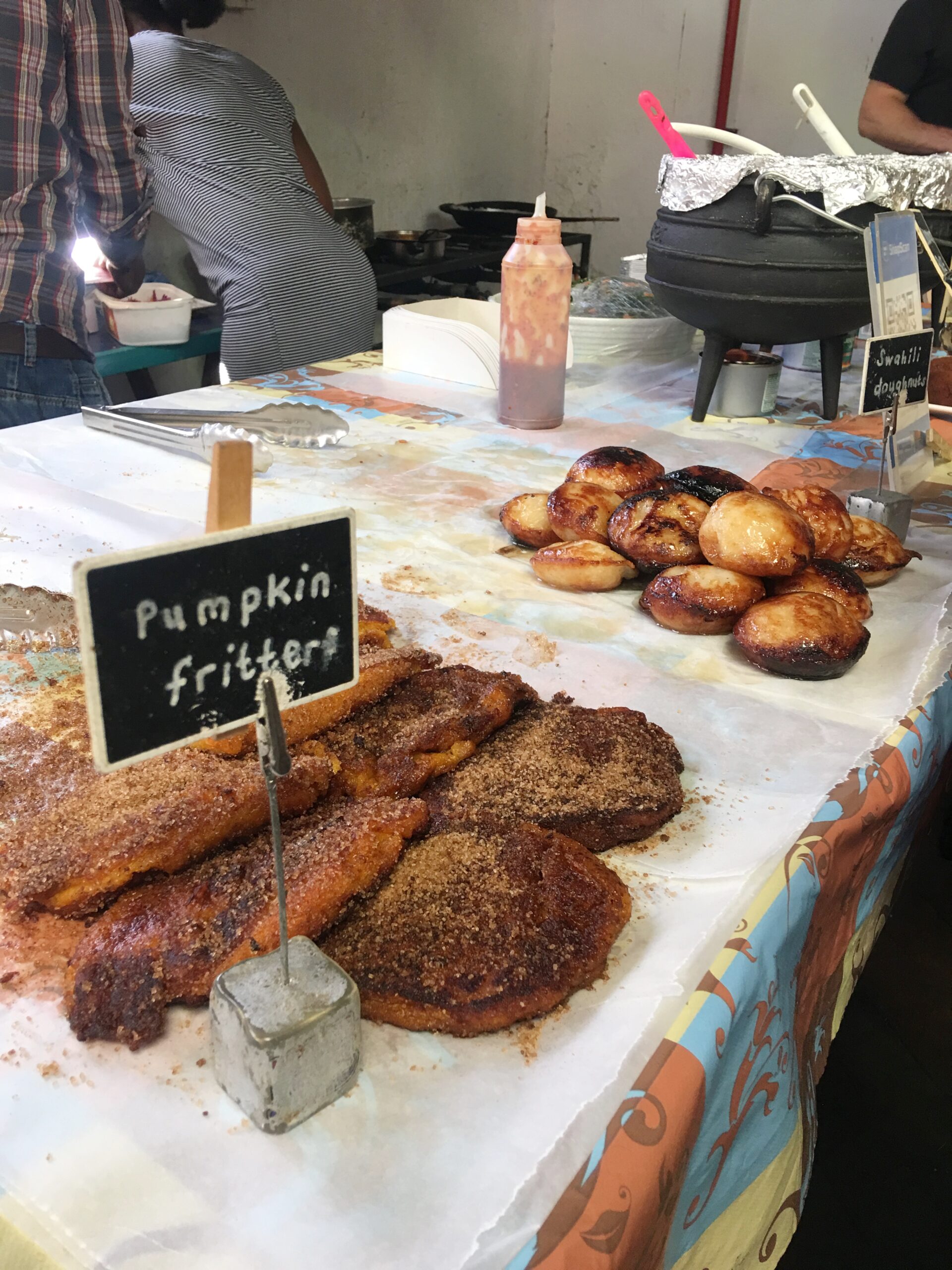
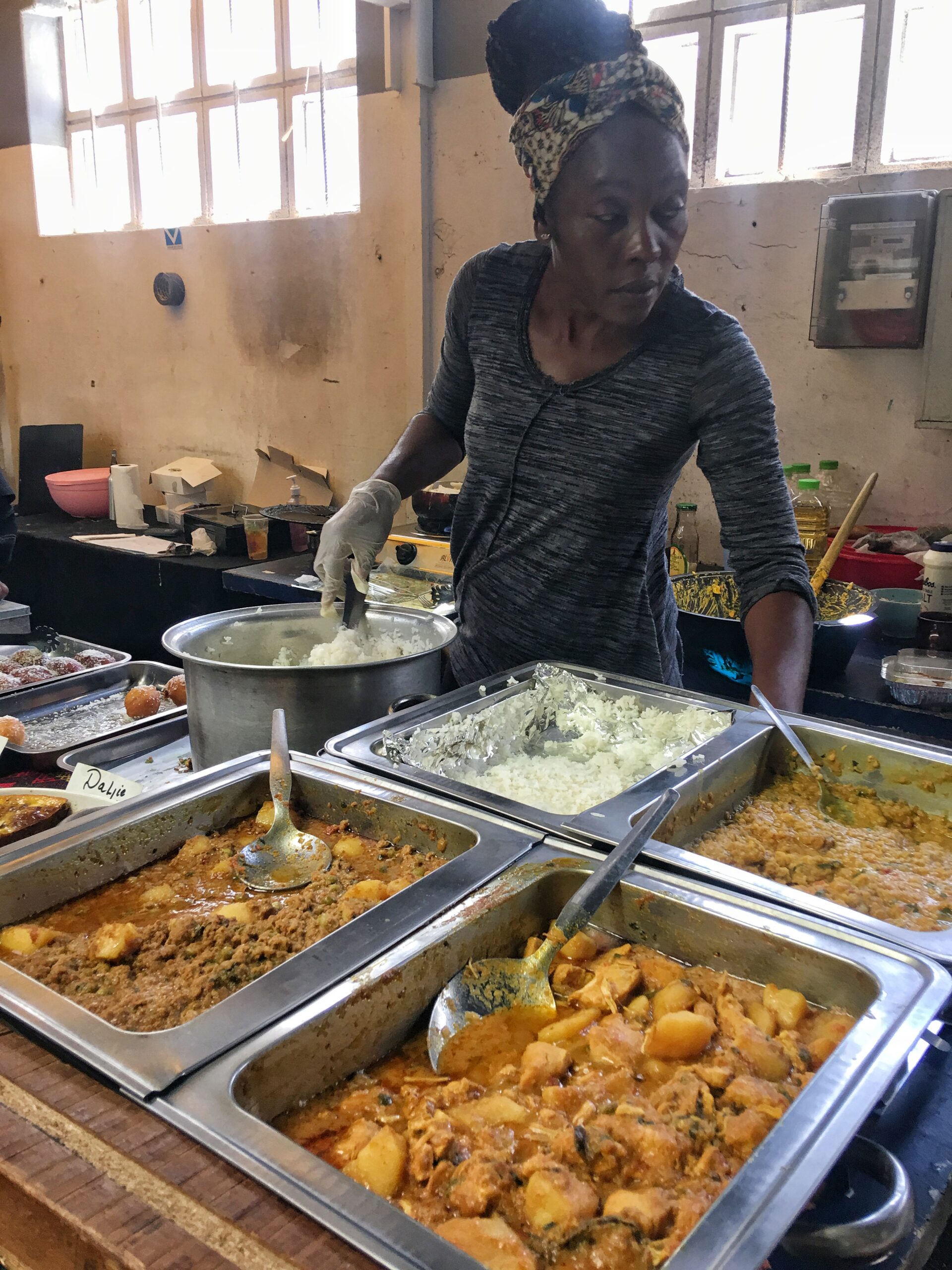
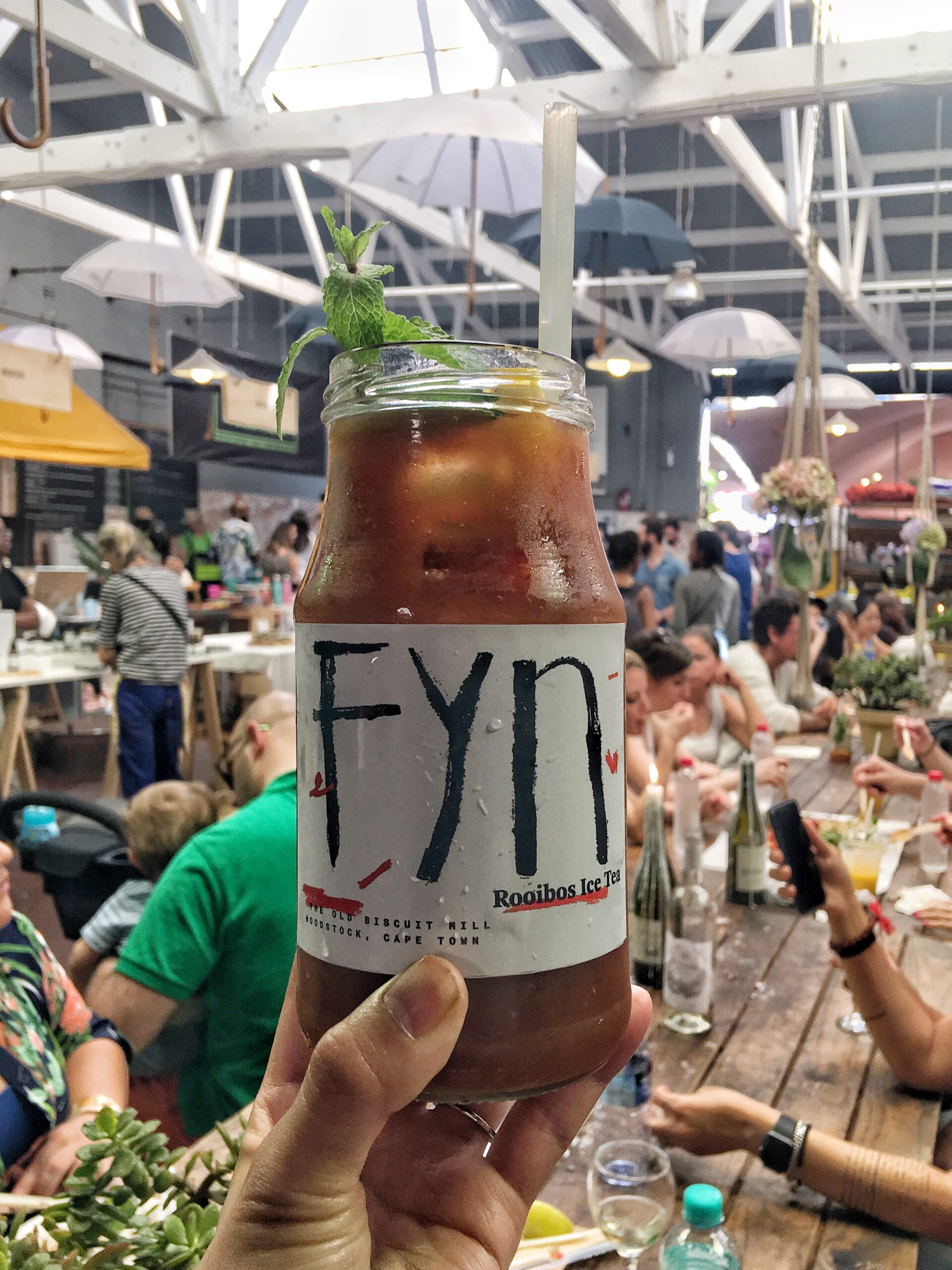
Bree Street
The rest of the day was spent exploring Cape Town’s fashionable Bree Street. With new eateries and designer shops popping up on every street corner (seriously, I wish I had a large enough stomach to try all the different restaurants!), this trendy hipster-friendly street is a lovely place to spend an afternoon stroll. Dinner was at Chef’s Warehouse and Canteen on Bree Street, which is a must-visit during any trip to Cape Town. This tiny restaurant features innovative tapas-style dishes typically served on large communal tables (we were lucky to get our own nook in front of the window), and every bite we had was divine!

TIP: Chef’s Warehouse and Canteen does not accept reservations so go early to put your name on the waiting list.
Day 3: Table Mountain and V&A Waterfront
Table Mountain
Our 3rd day in Cape Town was dedicated to exploring Table Mountain. We were one of the first groups in line for the funicular at 8am, and we were able to get up the mountain without waiting (as it gets later in the day, the lines for Table Mountain can get backed-up with average wait times of 1-2 hours).
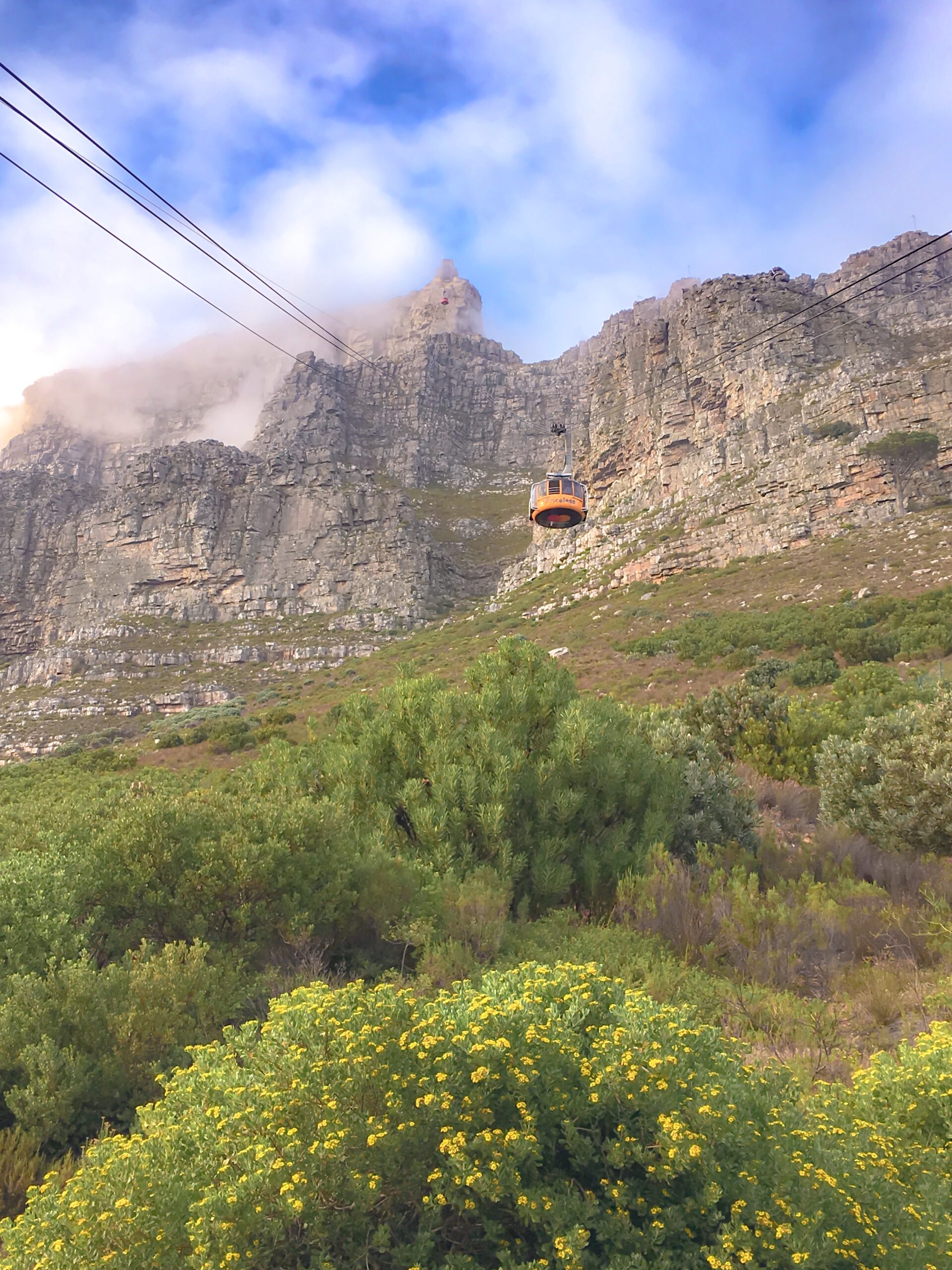
Of course, the moment we got to the top of Table Mountain, a thick white fog developed (so thick that I couldn’t even see Kevin walking in front of me!) and we had to wait around the café area for 45 minutes because we couldn’t see anything through the ‘tablecloth’.
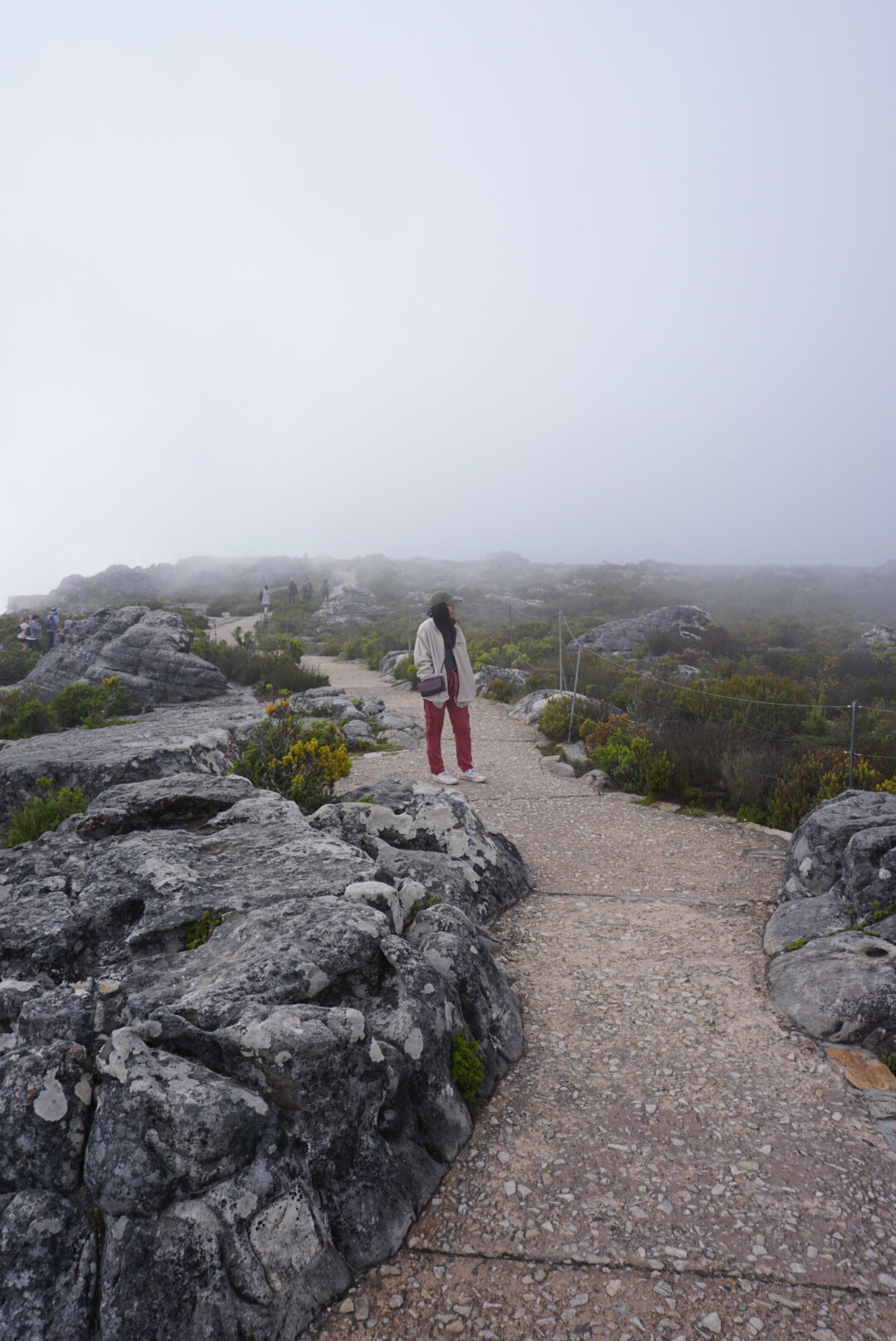
Luckily, the time passed by quickly because we were entertained by the appearance of several goofy little Rock Rabbits (locally called the ‘Dassie’), which are furry brown creatures that resemble an earless rabbit. Once the fog passed, we were able to witness wonderful views overlooking Cape Town.
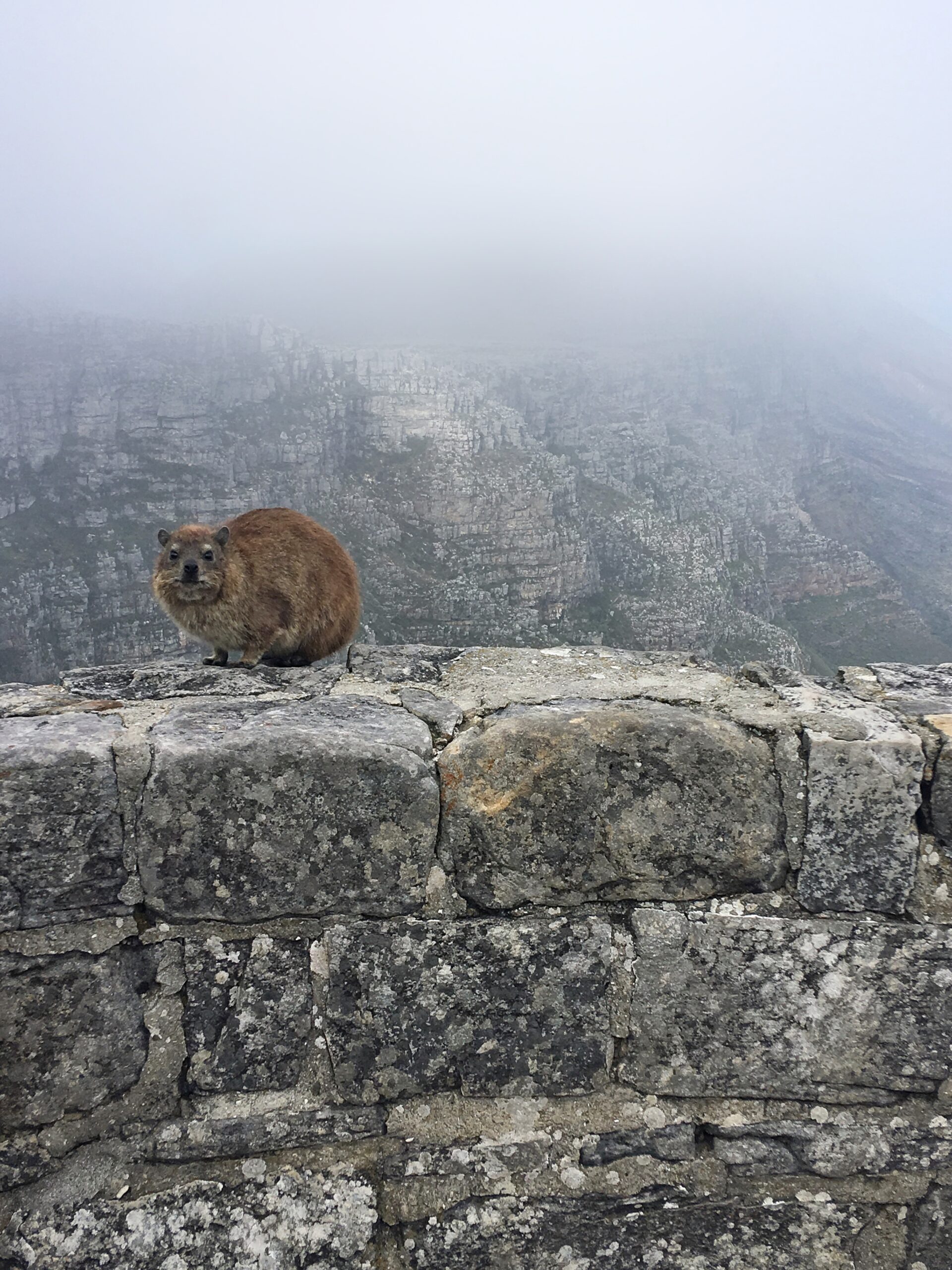


Skeleton Gorge Hike to Kirstenbosch Botanical Garden
Our original plan was to take the funicular back down the mountain, but Kevin convinced me that it would be fun to hike down the mountain instead (“it should only take 1-2 hours” he said). And so, we decided to hike down the mountain via the Skeleton Gorge hiking route, ending at the Kirstenbosch Botanical Garden since we were planning on visiting the gardens later in the day anyway. 4 hours later, we were still hiking, my legs felt like jelly, and my feet were blistered…but I couldn’t even be mad at him because the hike was absolutely epic.
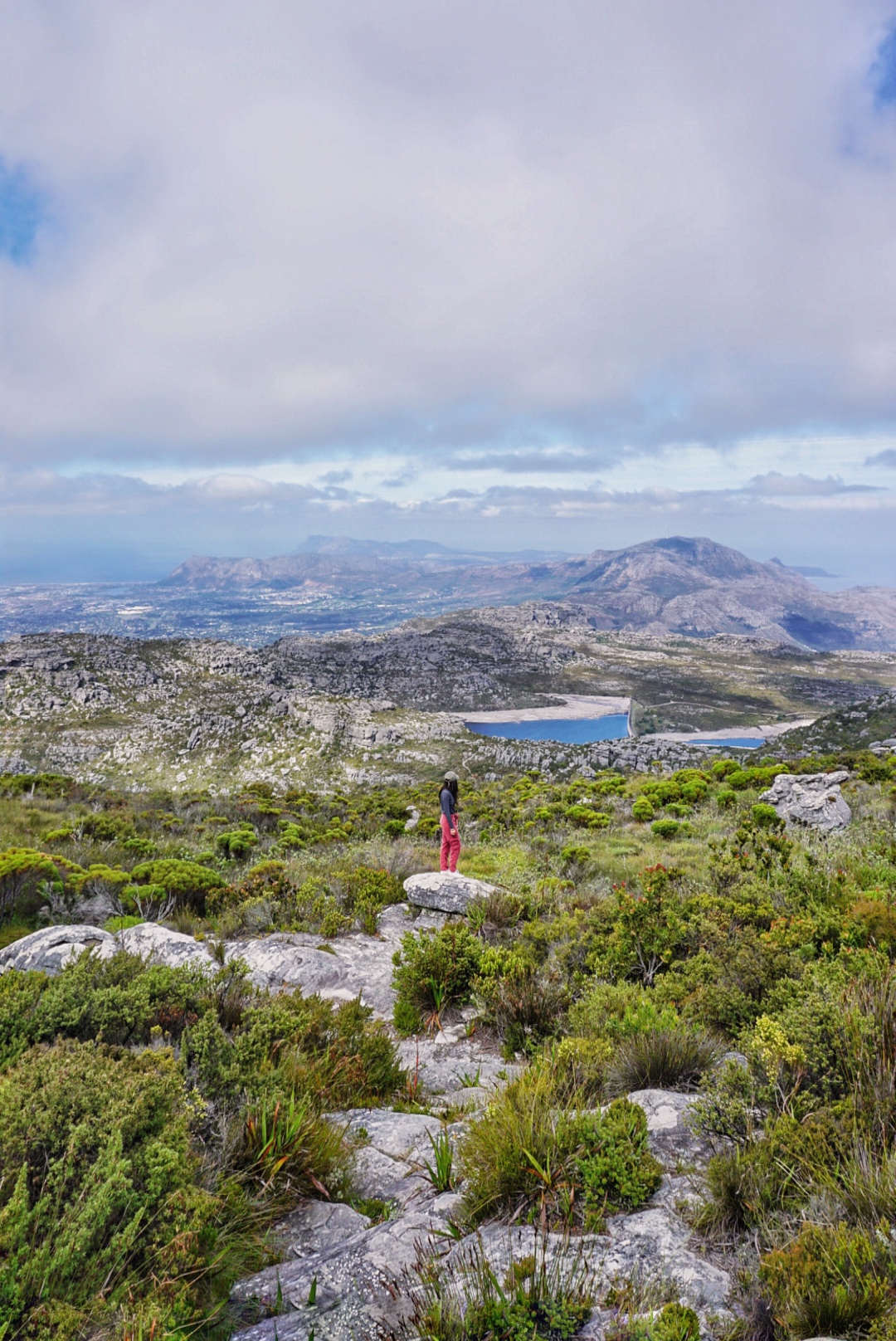
The hike took us past Maclear’s Beacon (the highest point on Table Mountain), through shaded forest, past several different flora and fauna (did you know that Table Mountain hosts the richest floral kingdom on earth with over 1,470 floral species?)!), and down several slippery rock ledges and ladders.
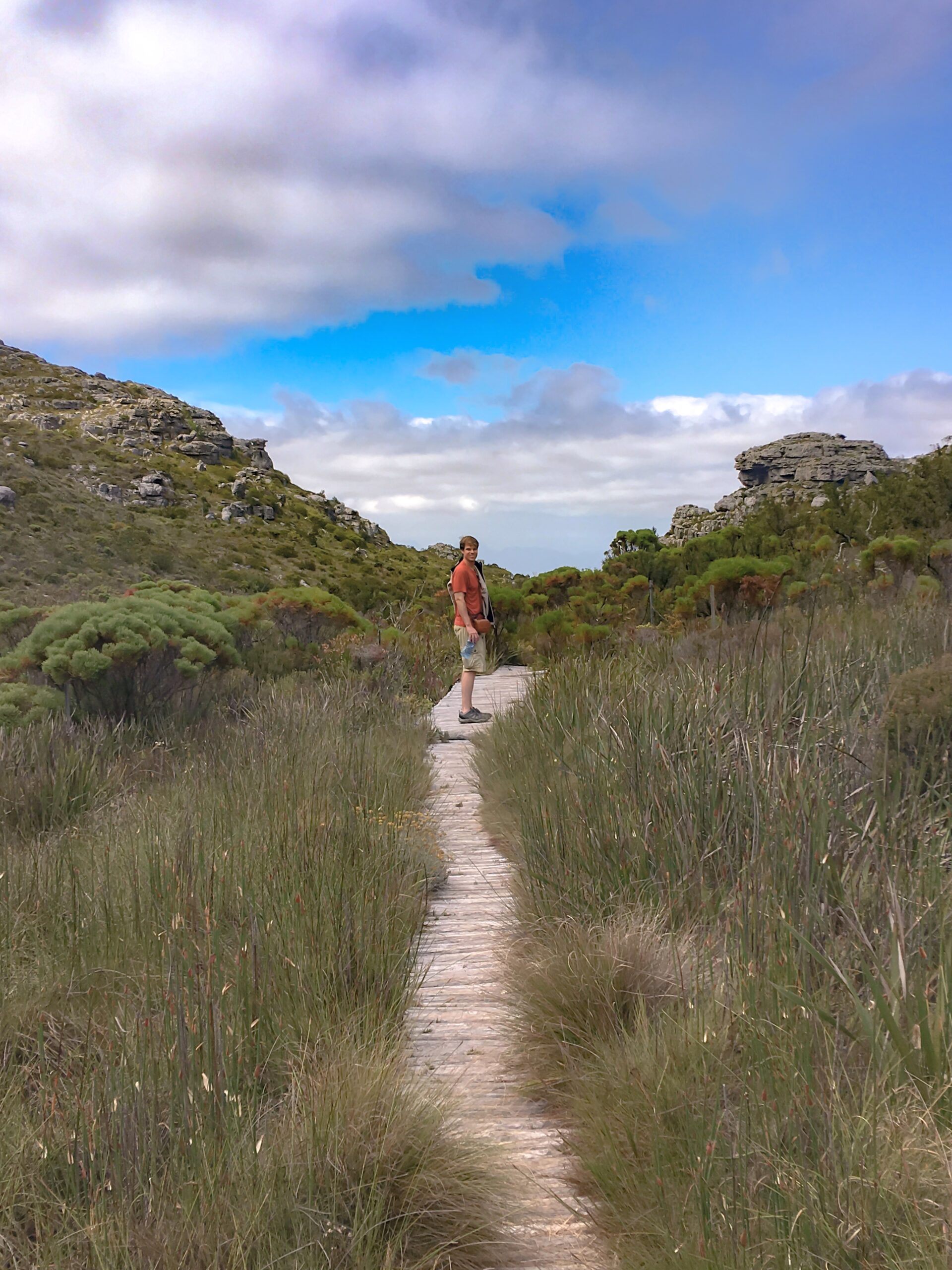
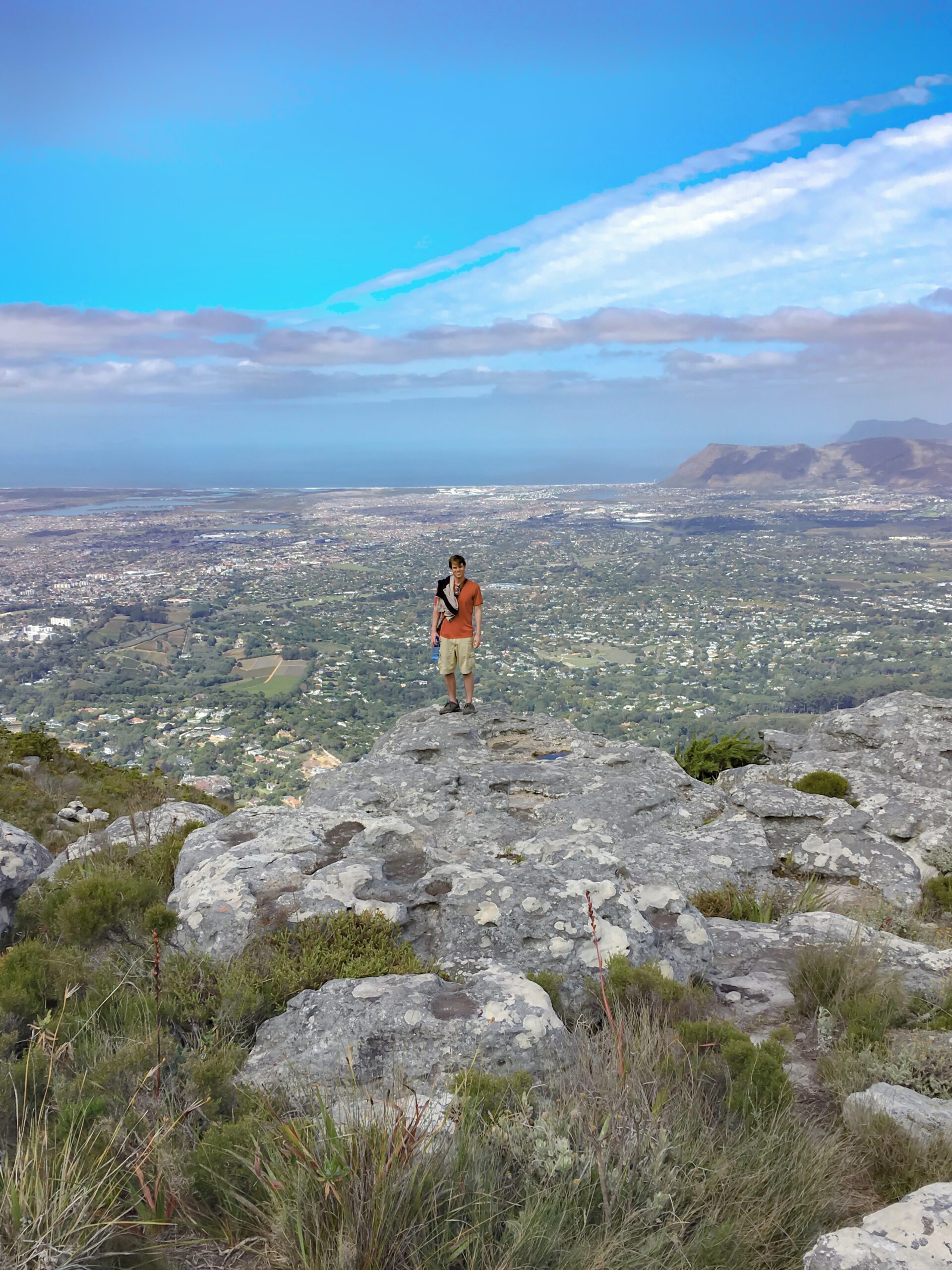

There were 6 ladders in total, which were meant to help us descend down some seriously steep rock faces…and it was here where we discovered that I am absolutely, positively un-coordinated when it comes to getting down ladders (which wasn’t helped by the fact that I am terrified of heights). If it hadn’t been for Kevin, I probably would’ve been stuck on that mountain forever (of course, he had to take an embarrassing picture before helping me down).


Our long hike ended at the foot of the Eastern slopes of Table Mountain, at the Kirstenbosch Botanical Garden, which is considered to be one of the world’s greatest botanical gardens. This wonderful garden is totally worth visiting – with over 1,300 acres of plant species, artwork, and sculptures, it was a lovely place to take a break and rest our feet on some benches. The sun was shining, birds were chirping, and there were plenty of families enjoying a nice afternoon picnic on the lawn. My favorite part of Kirstenbosch was the winding canopy walkway that ran above the tree-line, overlooking the gardens.
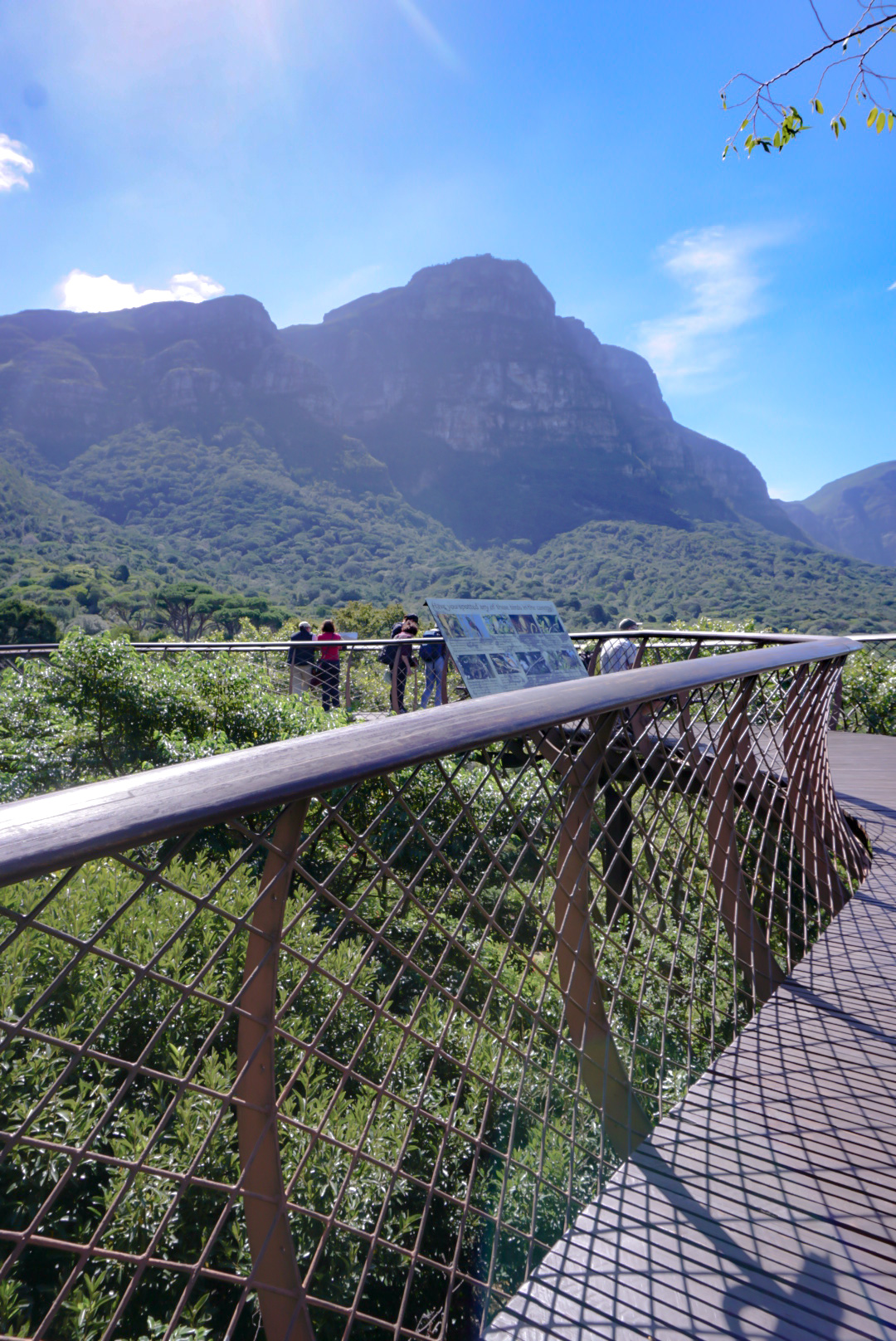
Victoria & Alfred Waterfront
After heading back to our AirBnB to shower and get freshened up, our evening was spent roaming the Victoria & Alfred Waterfront in the heart of Cape Town. The V&A Waterfront is a great place to go if you’re looking to do some shopping while in Cape Town – while there are several chain stores and restaurants at the Victoria Wharf, there are also a handful of unique African stores and artisanal food shops to peruse at your leisure. I particularly enjoyed visiting the food market where we sampled on some gourmet popcorn, local ice cream, and bubble tea!

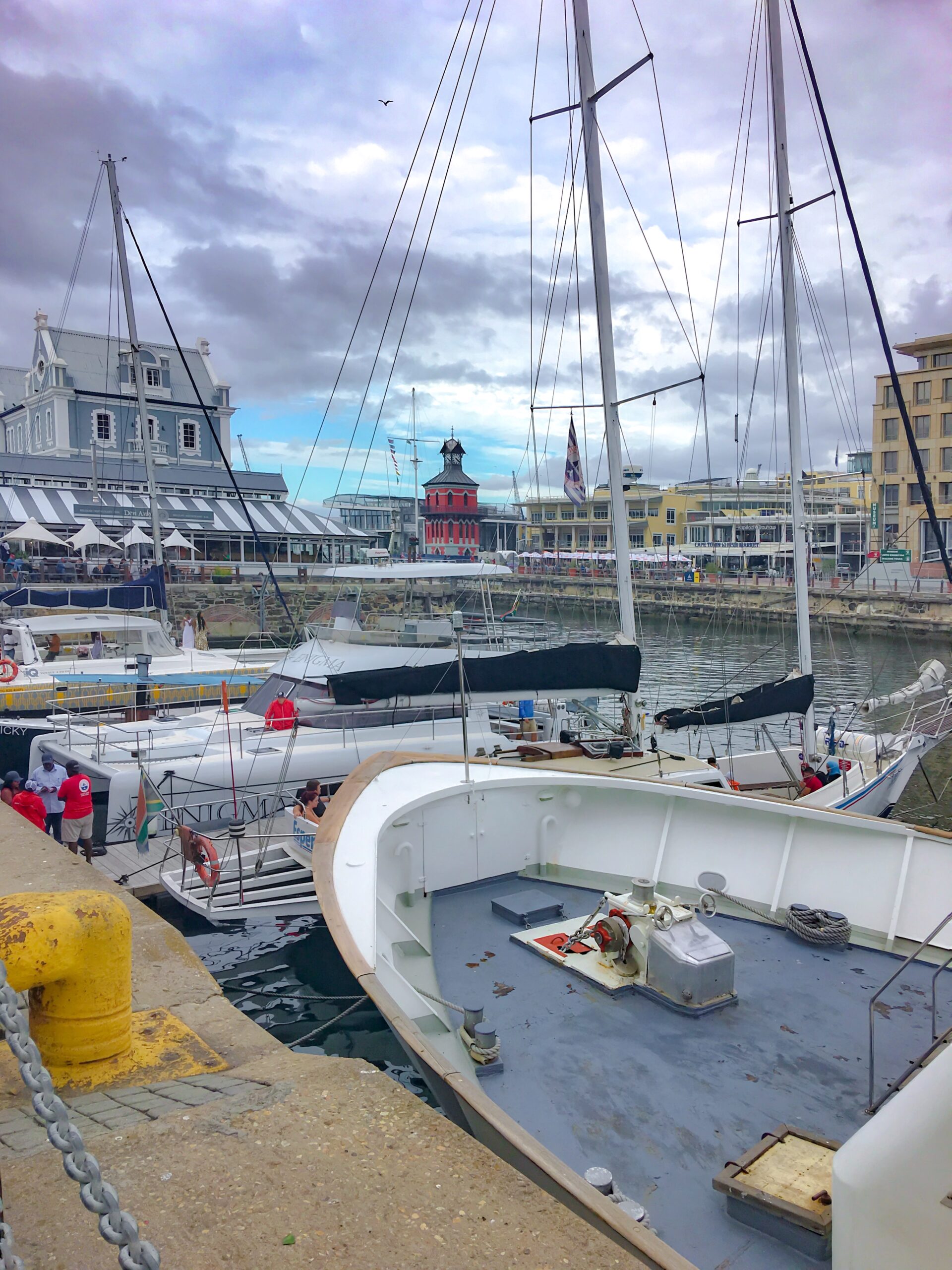

For dinner, we headed back to The Butcher Man for some burgers and fries (after our long hike, we deserved it!).
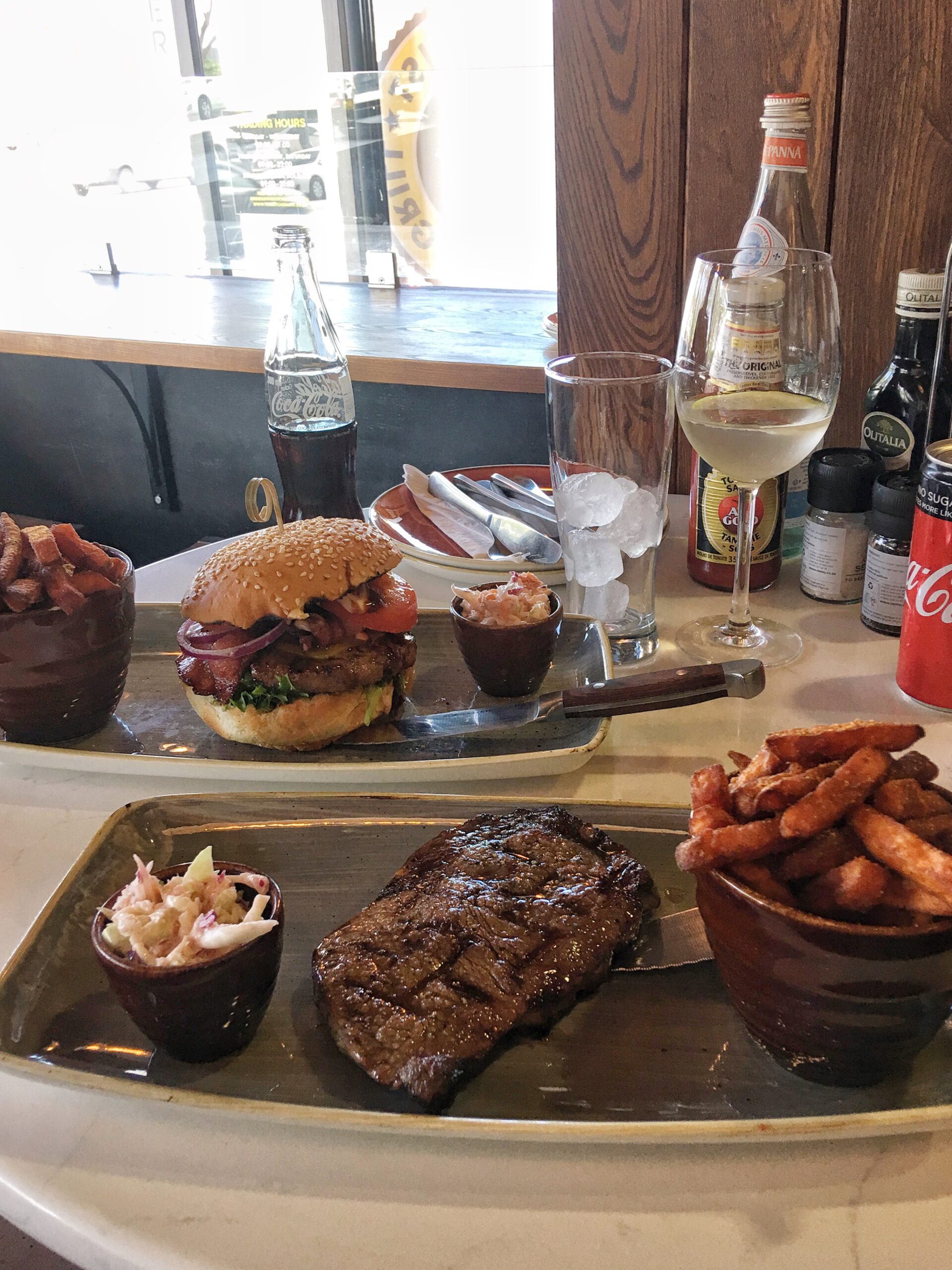
TIP: While we didn’t have time to make it to Robben Island, the V&A is the place to go where you can take a ferry ride across Table Bay to Robben Island which is where political prisoners fighting to end Apartheid and segregation were held. This UNESCO World Heritage site is also where Nelson Mandela spent the majority of his time in prison.
We hadn’t planned this as an activity, but Kevin and I discovered that there was an Ed Sheeran concert while we were in town. After enjoying a drink (or two), we randomly decided to book last-minute tickets to the concert which made for a fun, spontaneous night!
Day 4: Bo-Kaap, Chapman’s Peak, and Camps Bay
Bo-Kaap
Our last day in Cape Town started off with a light breakfast at Shift Espresso Bar (a trendy coffee shop in Green Points near our AirBnB), before heading to walk around the neighborhood of Bo-Kaap. This formally racially segregated area is one of the oldest and most historical residential areas in Cape Town, and is synonymous with Cape Malay culture. During the Apartheid era, Bo-Kapp was designated as a Muslims-only area, and was the only area of Cape Town where Cape Malay people were allowed to live (one of the few city center locations designated for ‘non-whites’).

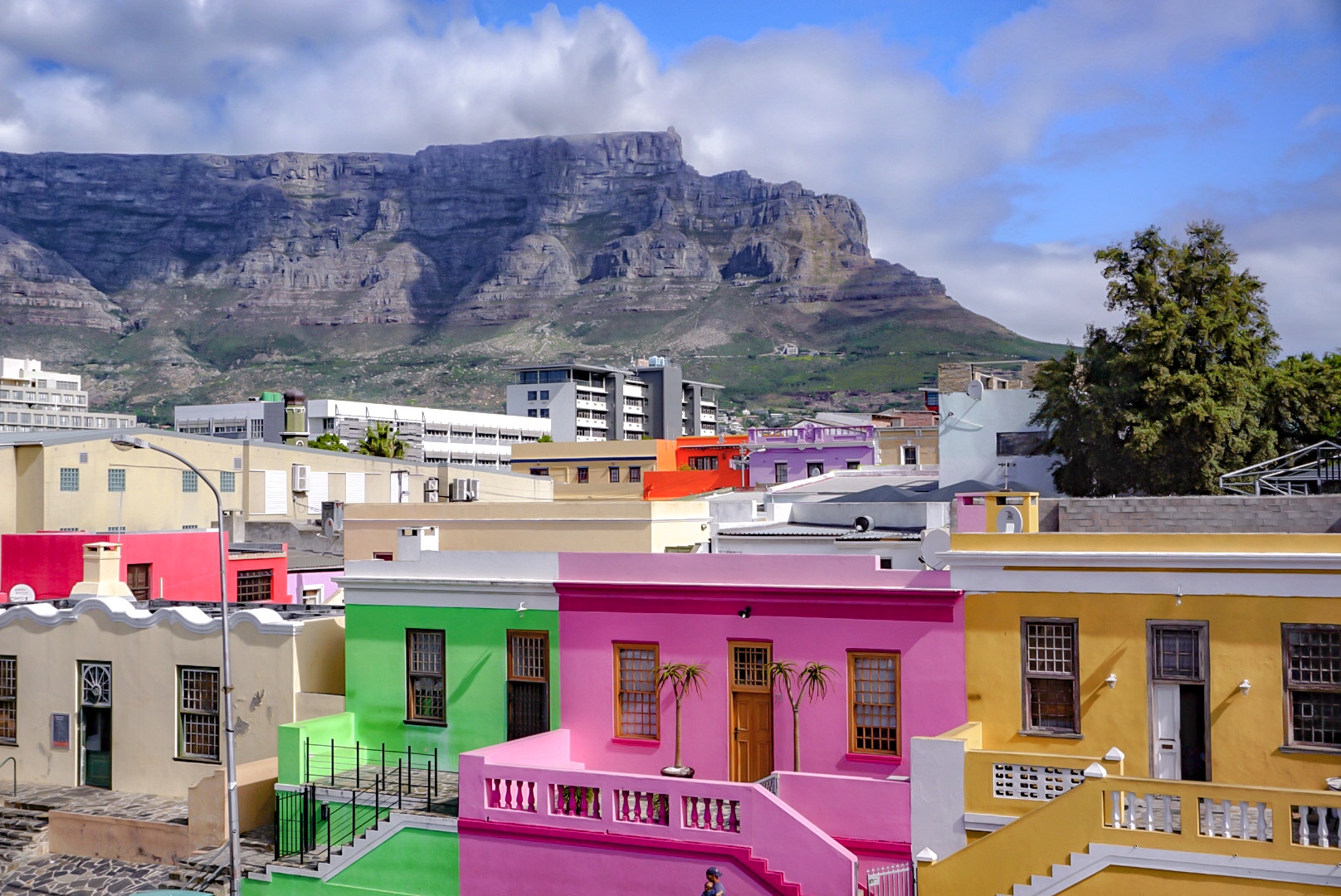


Today, Bo-Kaap is known for it’s Instagrammable eye-catching colors and Cape Malay cuisine. This rainbow of colors is said to be attributed to the fact that previous government ruling was that all of the homes in the area had to be painted white. Once the rule was lifted, the residents decided to paint their homes in an array of bright colors in celebration of their freedom. You can learn more about this history by visiting the Bo-Kaap Museum on Wale Street, which also happens to be Bo-Kaap’s oldest building.


While we loved learning more about the history of this neighborhood, and appreciated the colors and beautiful mix of Cape Dutch and Georgian architecture….I have to admit that we didn’t particularly enjoy our time in Bo-Kaap. While it’s regarded as a generally safe place to walk around (unlike many other parts of Cape Town), we were bombarded several times by different groups of children and teenagers harassing us for money.
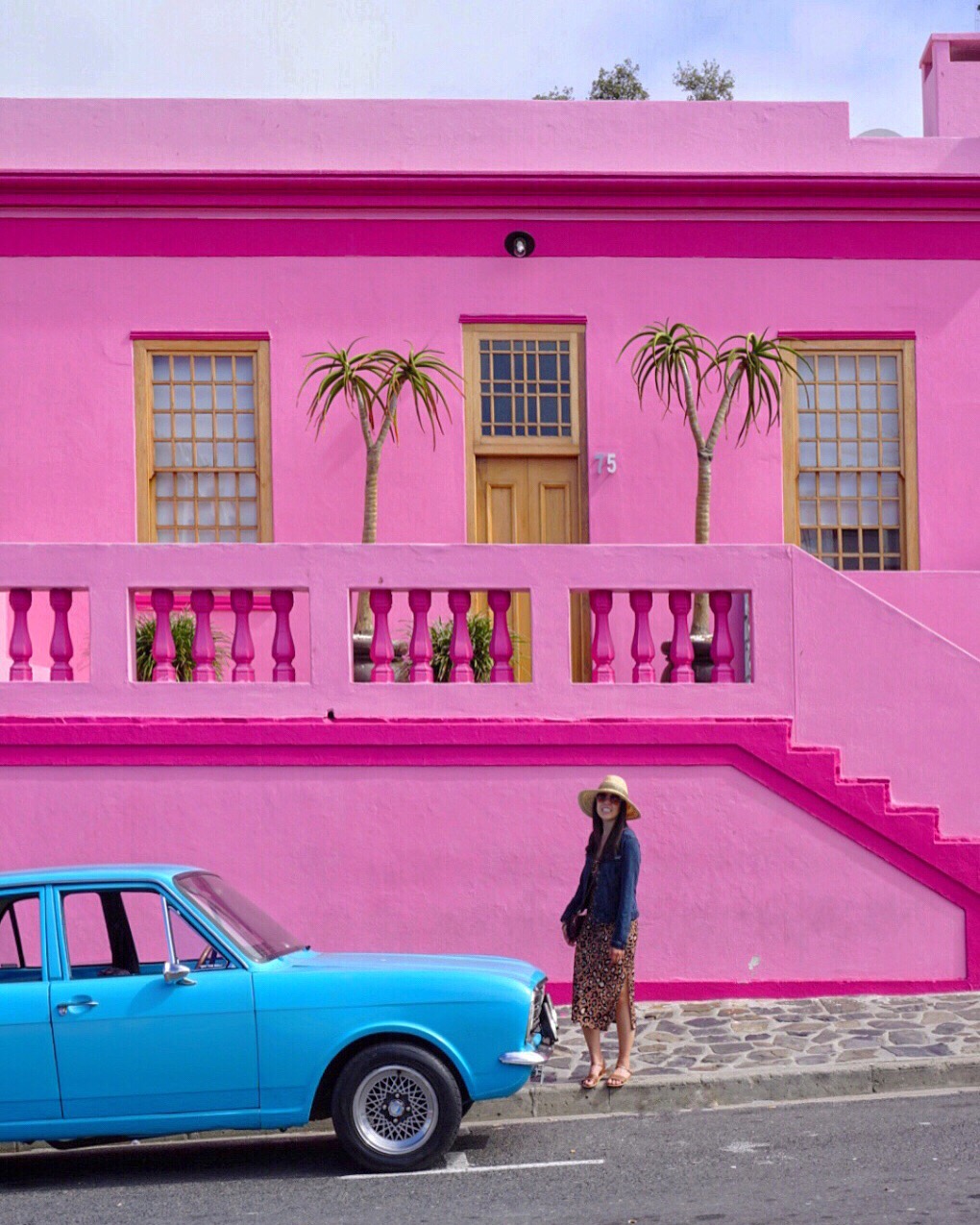
Chapman’s Peak
Chapman Peak Drive is a toll road that is considered to be one of the world’s most spectacular coastal drives. Running between Hout Bay and Noordhoek, this exhilarating drive zig zags through 114 bends some of Cape Town’s most dramatic landscapes. Although the drive is only 6-miles long, make sure to budget a good amount of time for visiting as there are plenty of spots to stop and take pictures.
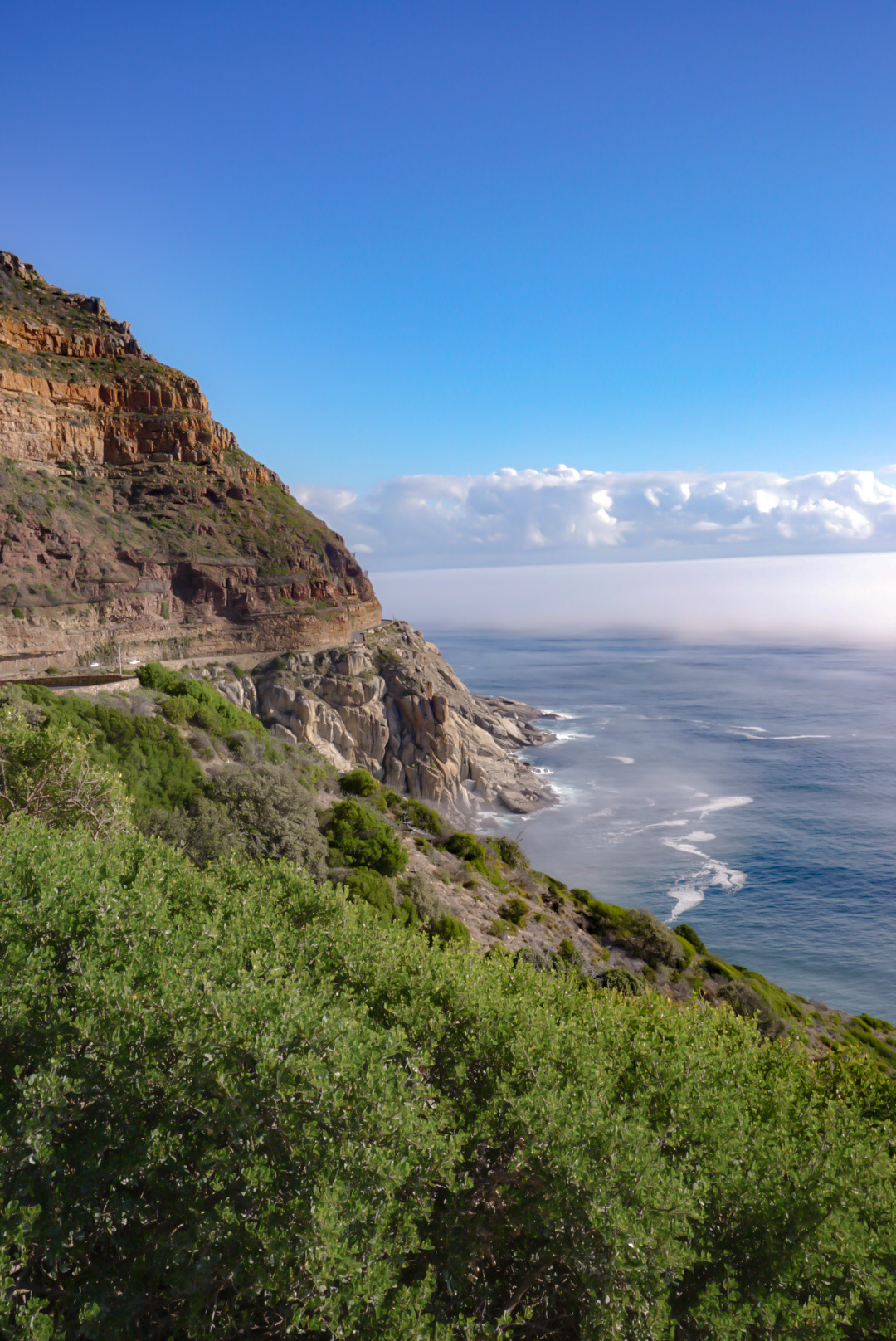

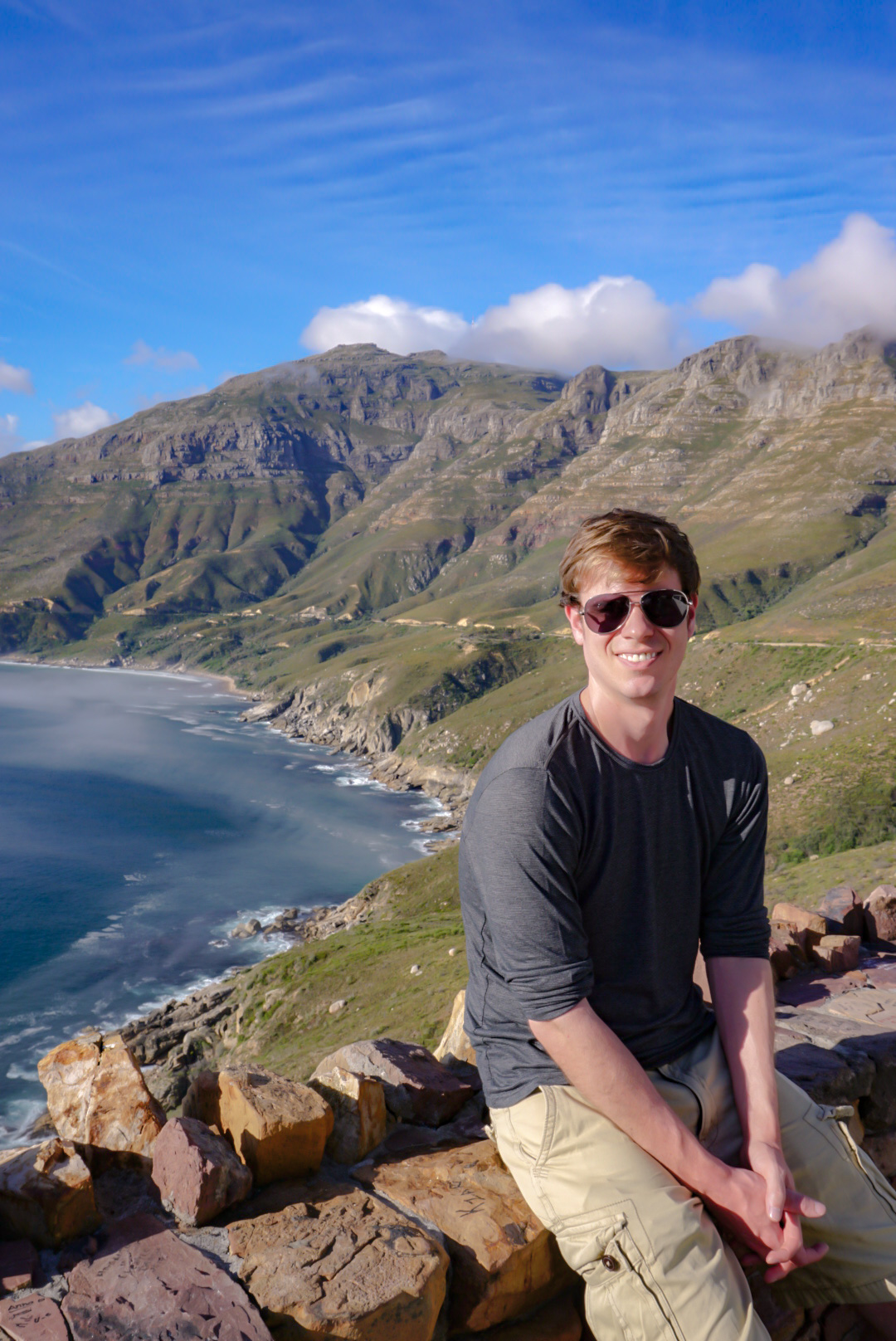

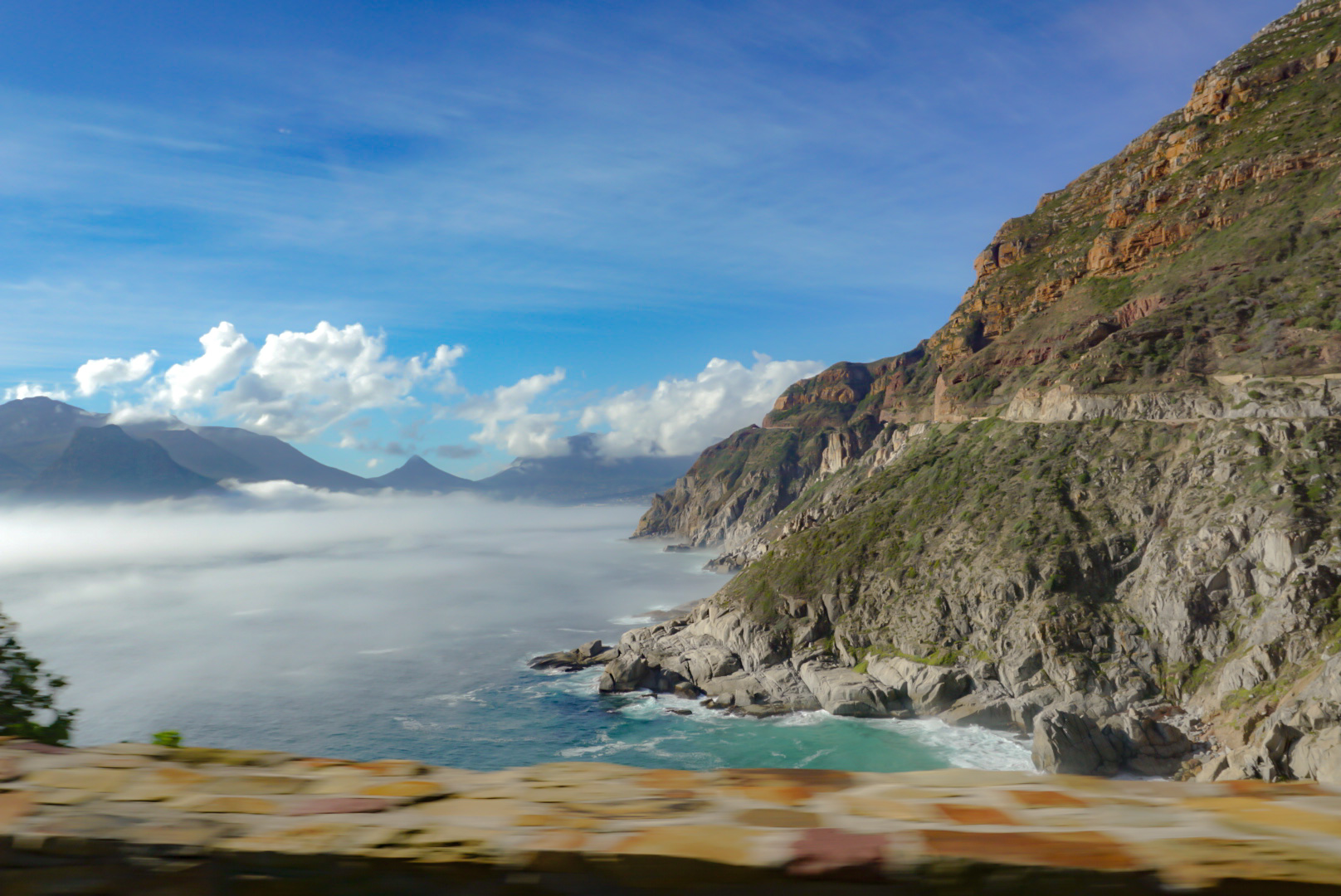

Camps Bay
Our night ended in Camps Bay, which is a stylish beachfront known for its fine white sand, natural rock swimming pool, and fashionable promenade of bars and restaurants.

This affluent suburb is definitely one worth visiting – its location between the Atlantic Ocean and the Twelve Apostles mountain range makes for some of Cape Town’s most breathtaking scenery. We spent several hours walking along the beach and restaurant promenade, dipping our feet in the tidal pools, and people-watching/dog-watching (there was one dog who kept us particularly entertained…it was the best runner/catcher I’ve ever seen!). With it’s westward-facing views out towards the ocean, the Camps Bay Beach made for the perfect spot for watching the sunset on our last night in Cape Town.

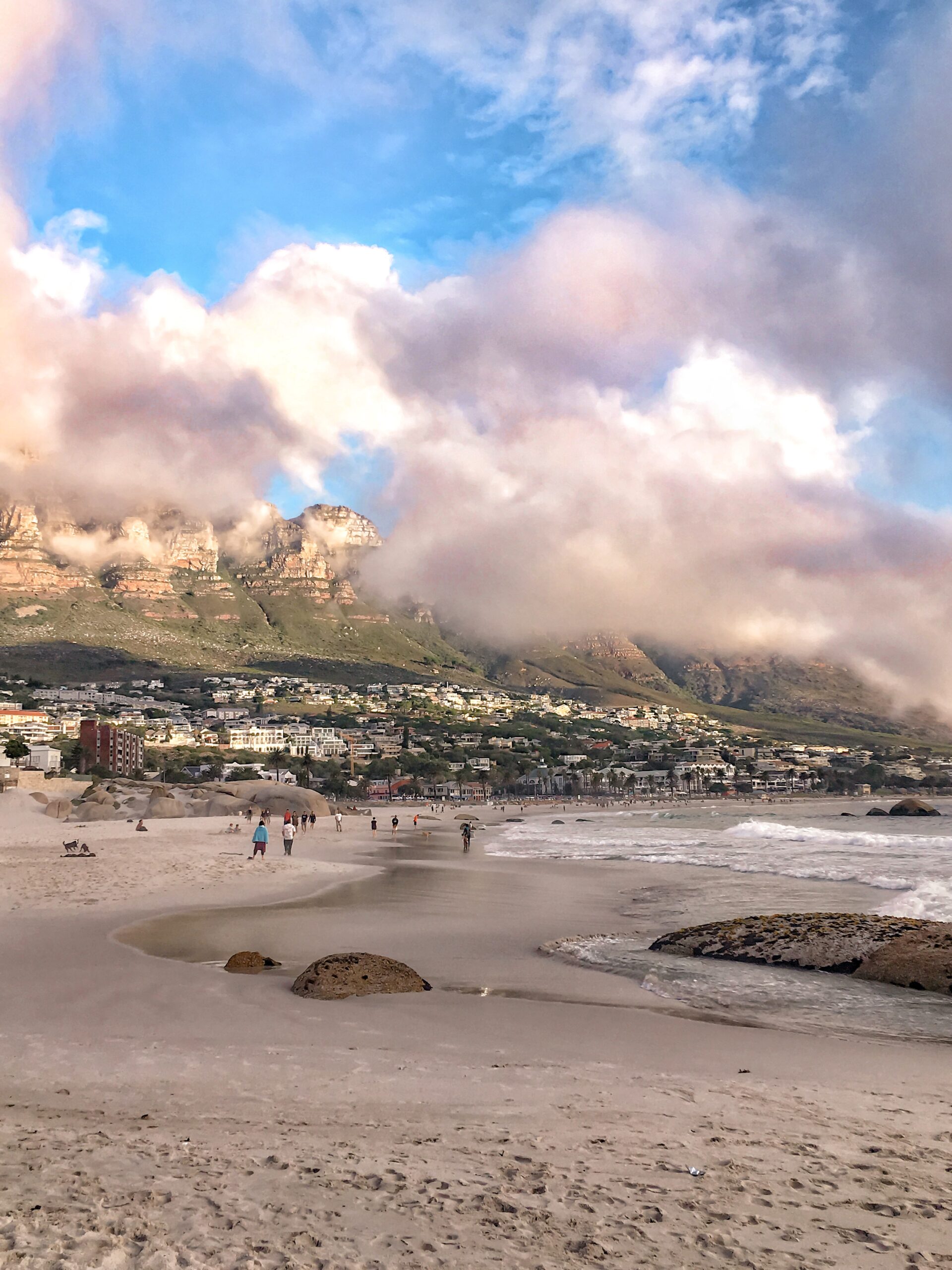

Kloof Street
Dinner was at Kloof Street House which was another great dining experience in Cape Town. The interior design of this restaurant is stunning – every dining room inside this Victorian-themed house is richly-furnished and it felt like we had walked back in time. Paired with a romantic outdoor garden and a live jazz band, it was a lovely setting for a romantic dinner to celebrate our time in a wonderful city.



After spending 4 days in Cape Town, we headed to the nearby town of Stellenbosch to enjoy some South African wine! I’d highly recommend budgeting for a few days in Stellenbosch when you’re in the area because the region is absolutely dreamy. Read more about our perfect wine weekend in Stellenbosch here.
Related Post: The Perfect Wine Weekend in Stellenbosch
Related Post: Planning a Safari in Kruger National Park
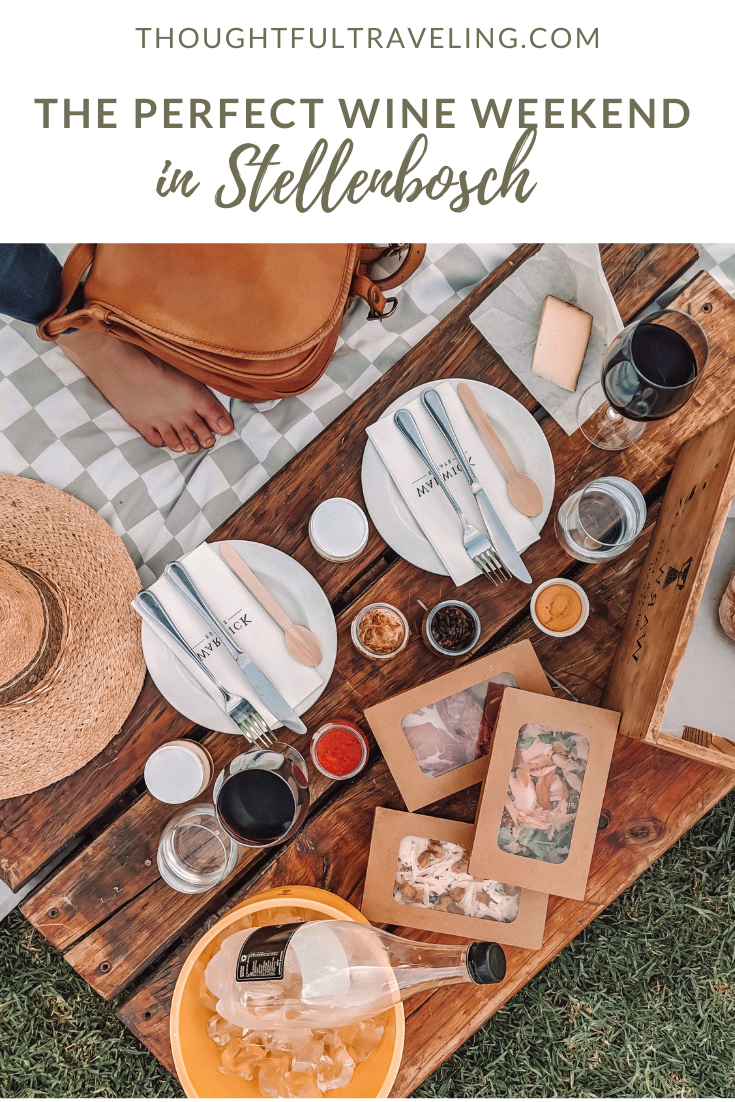
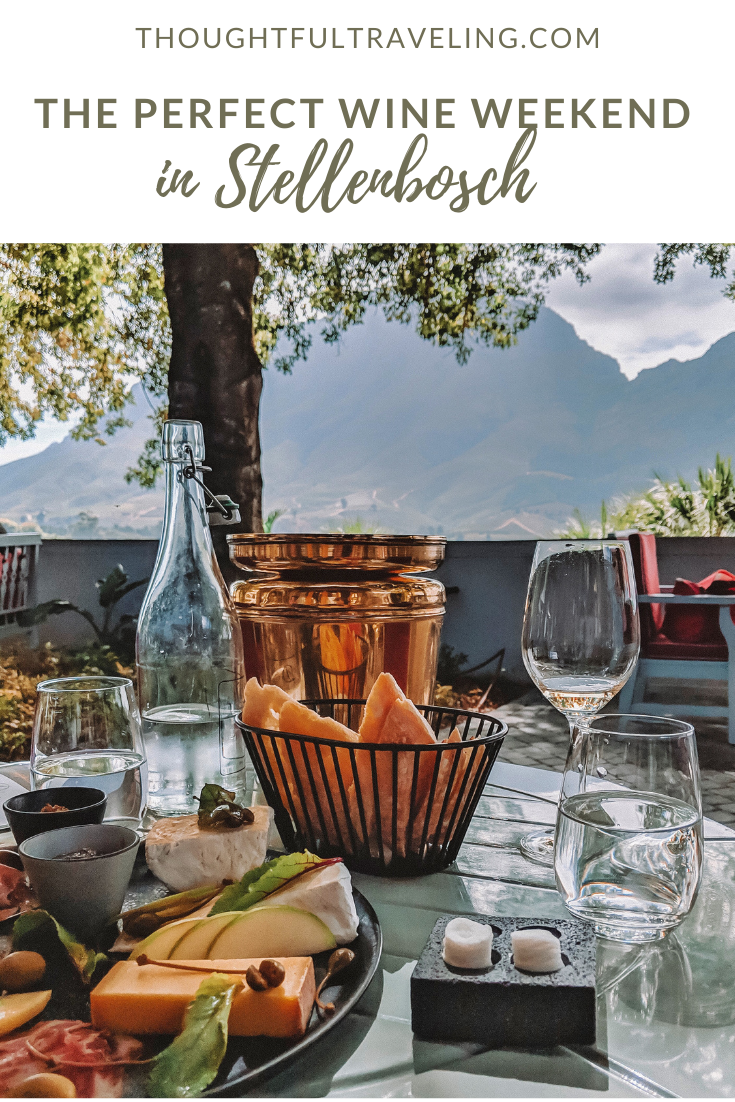

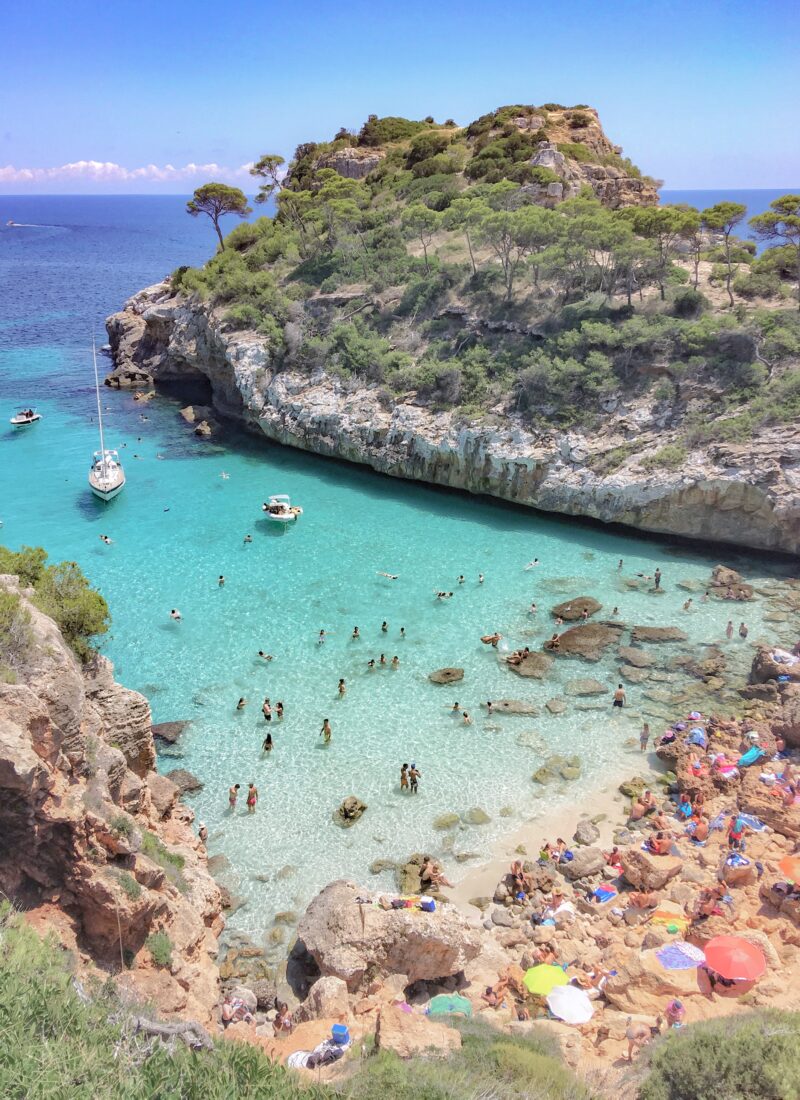
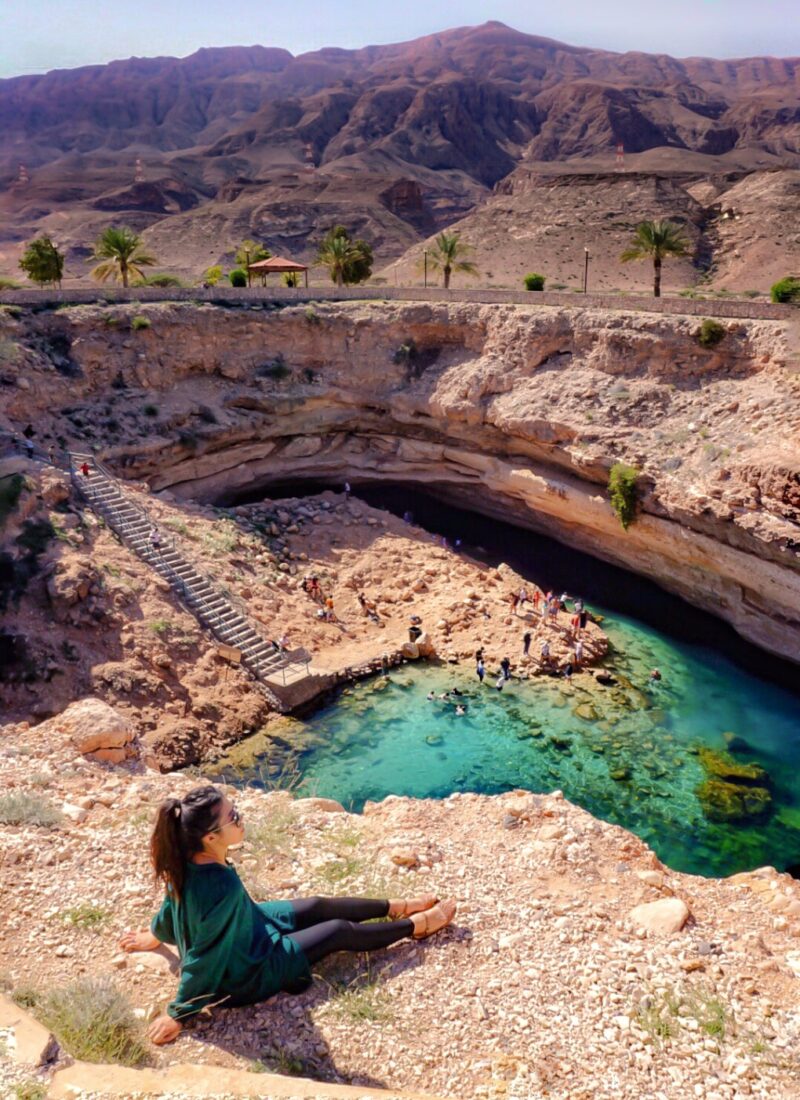



Leave a Reply